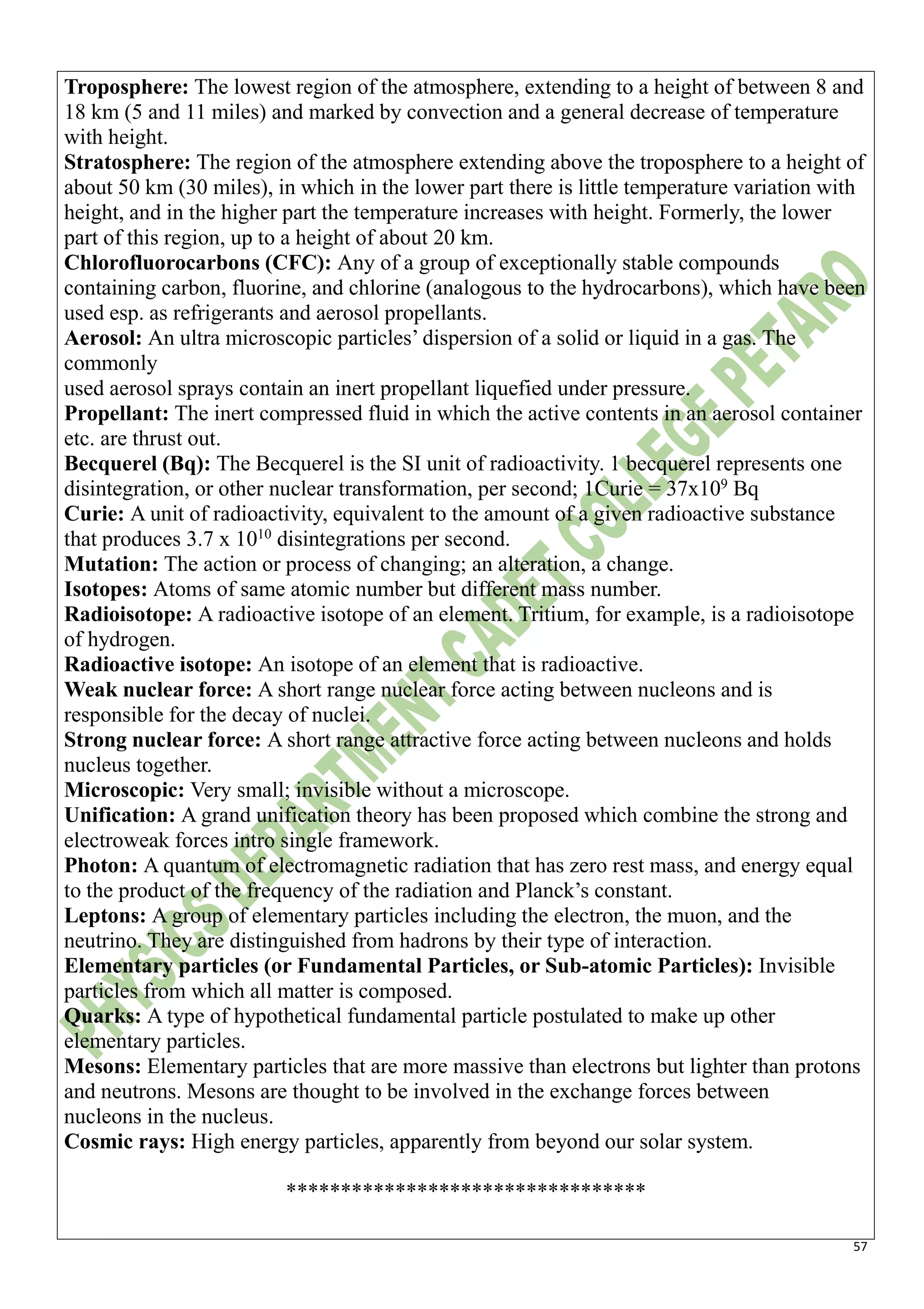The document provides an overview of topics covered in physics, listing 18 chapters and the page numbers where their content can be found. It includes motion, forces, energy, circular motion, fluids, oscillations, waves, optics, heat, thermodynamics, electromagnetism, electronics, atomic and nuclear physics. Vector quantities and equilibrium are discussed in more detail, explaining concepts like scalars, vectors, addition and subtraction of vectors, and concurrent and coplanar forces. Torque, moment arm, angular velocity and acceleration are also defined.
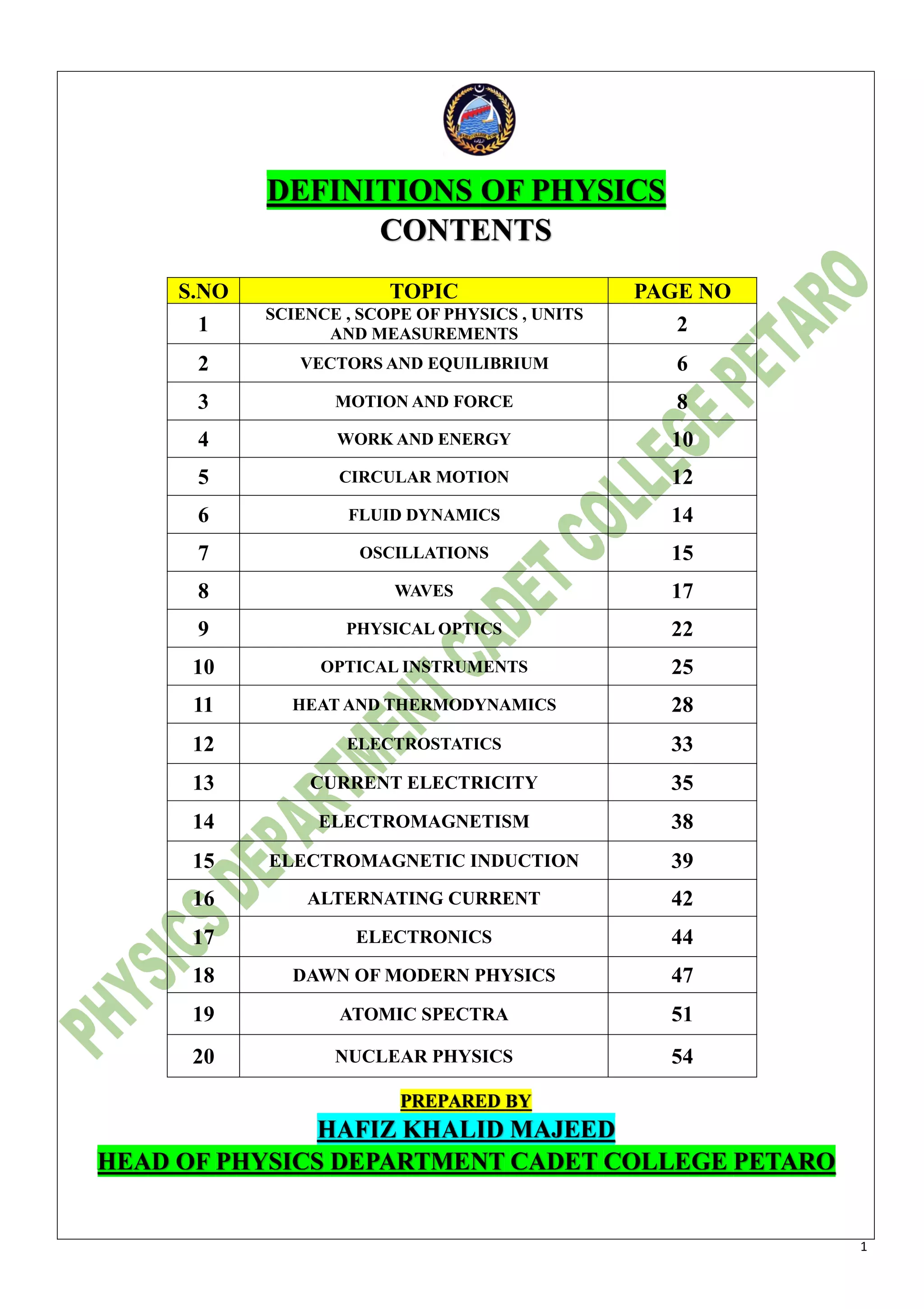
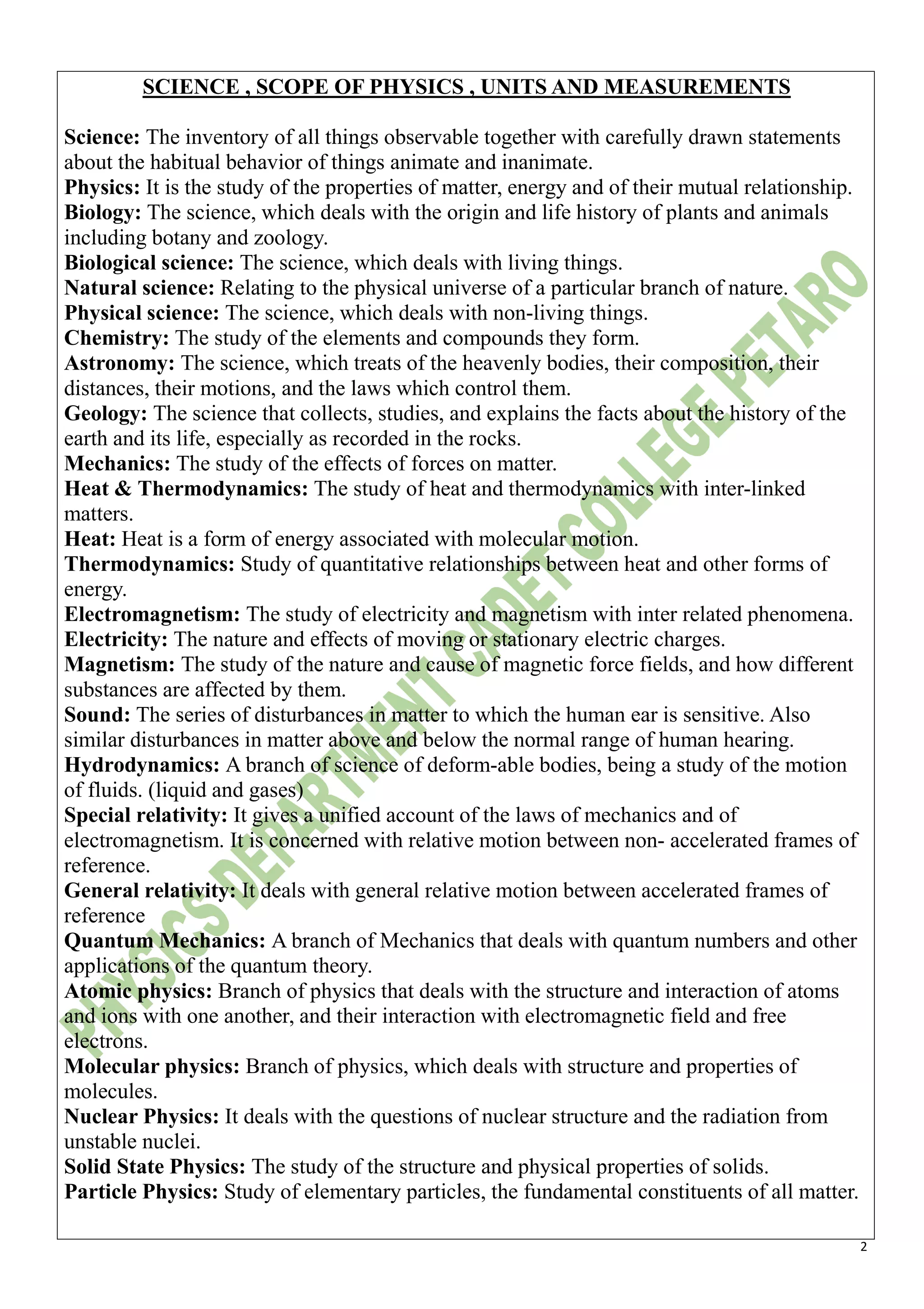
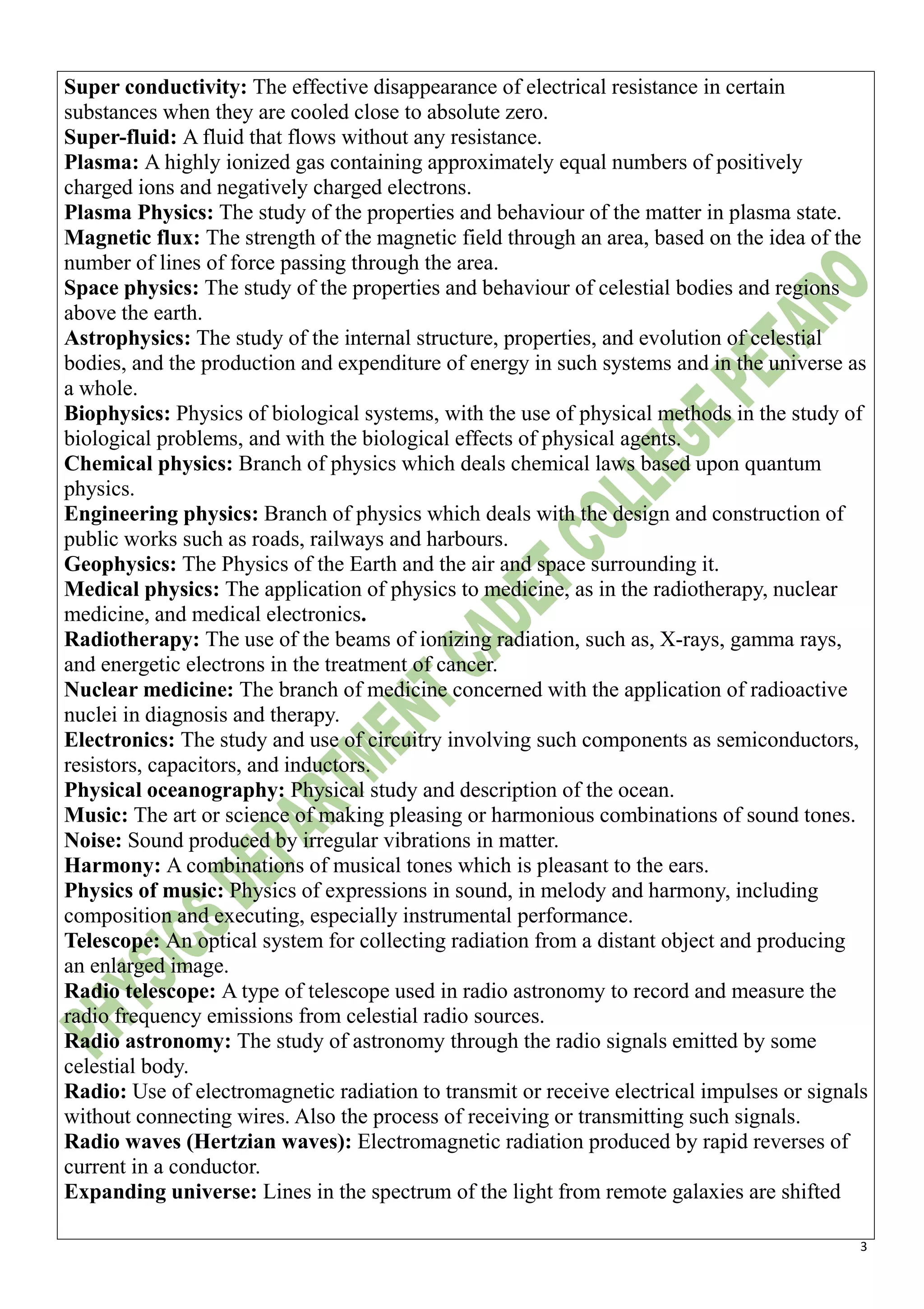
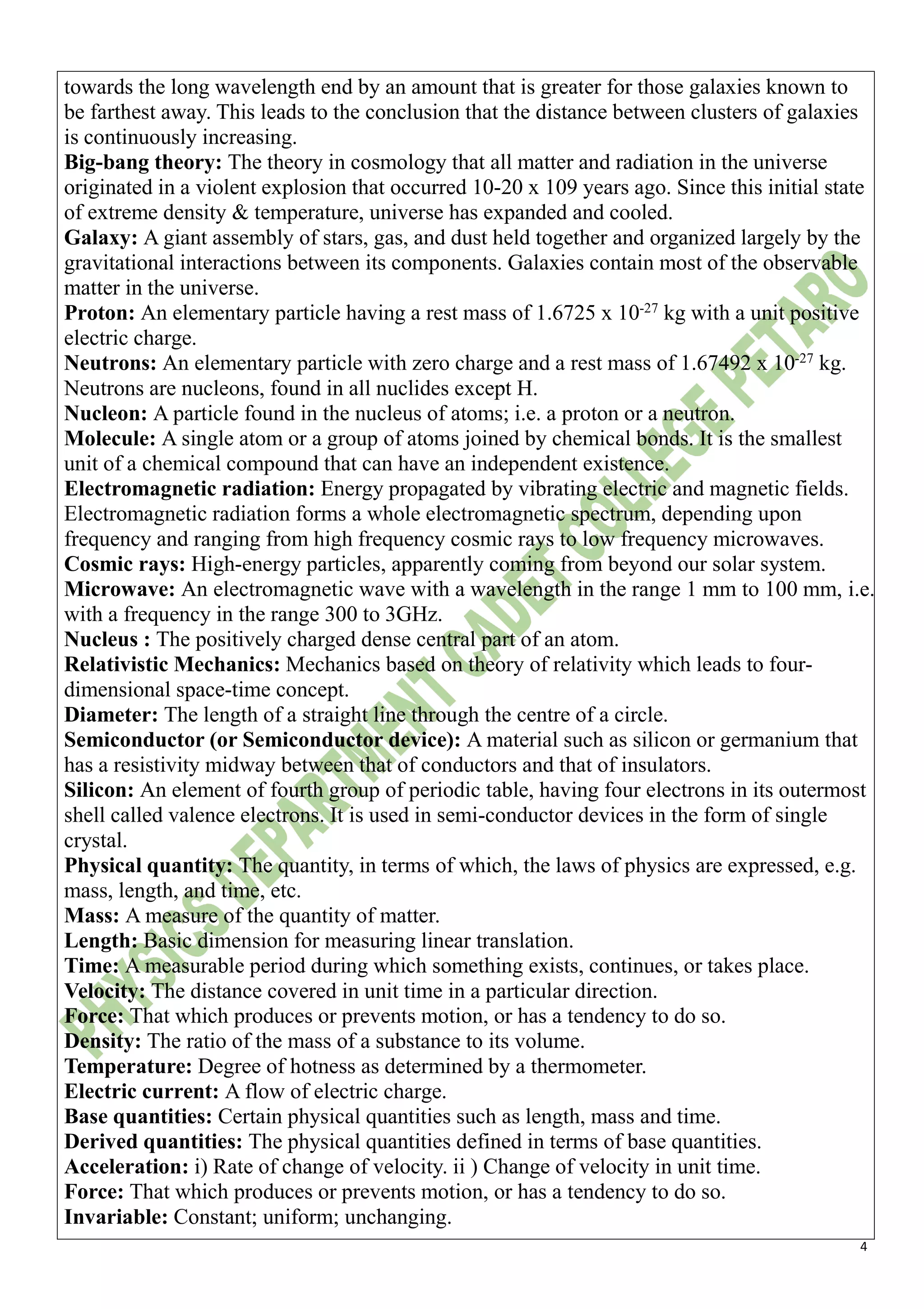
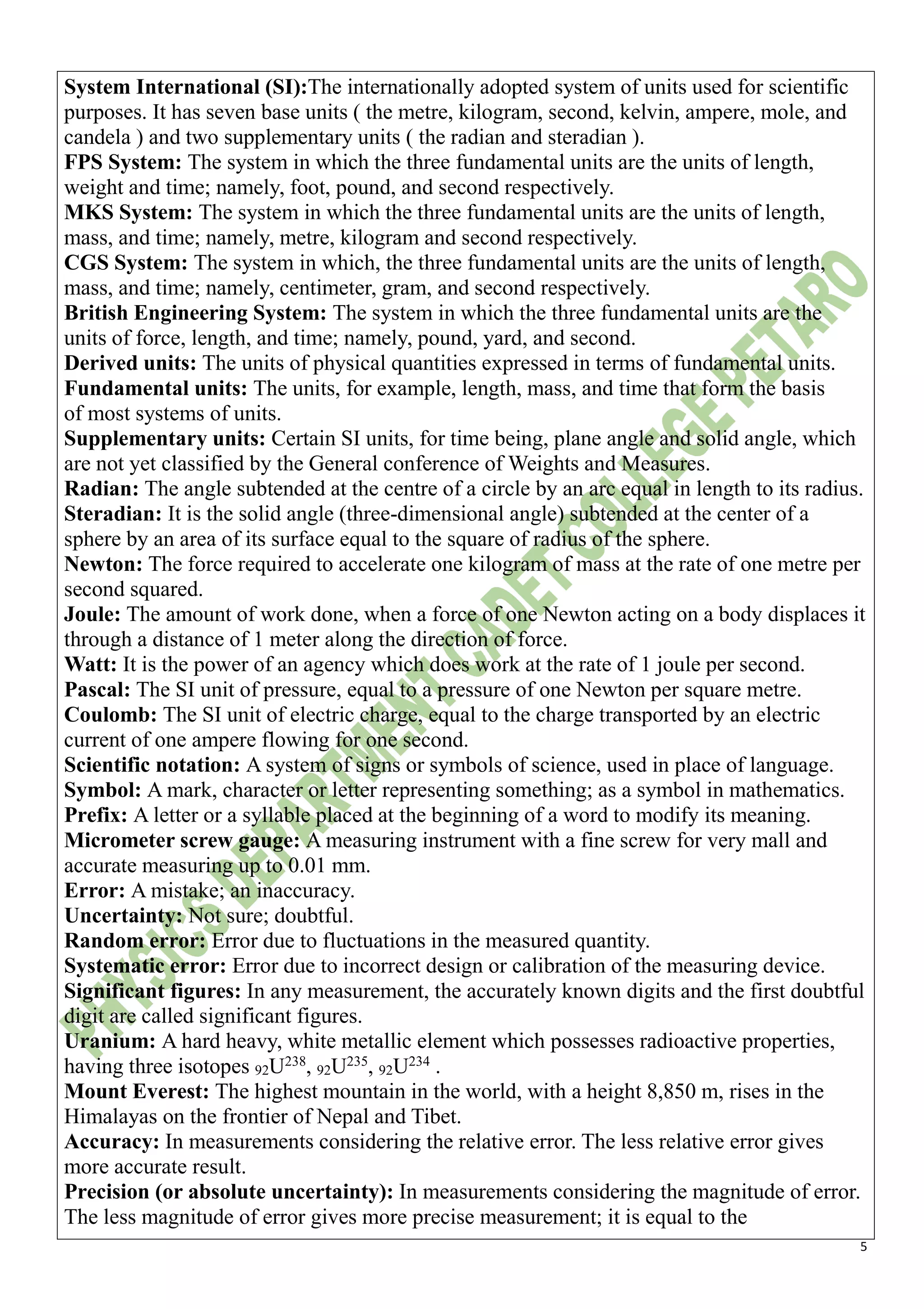
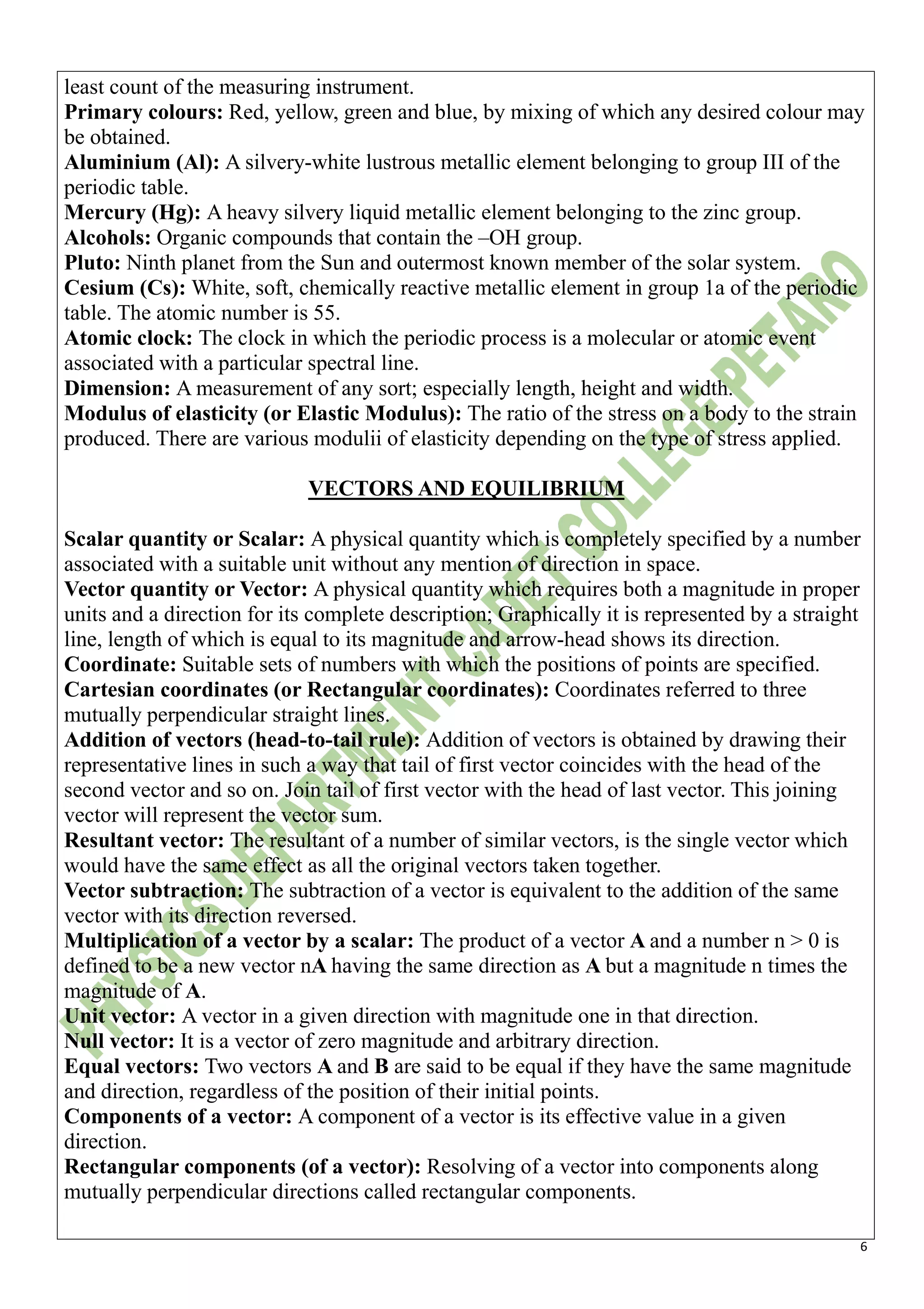
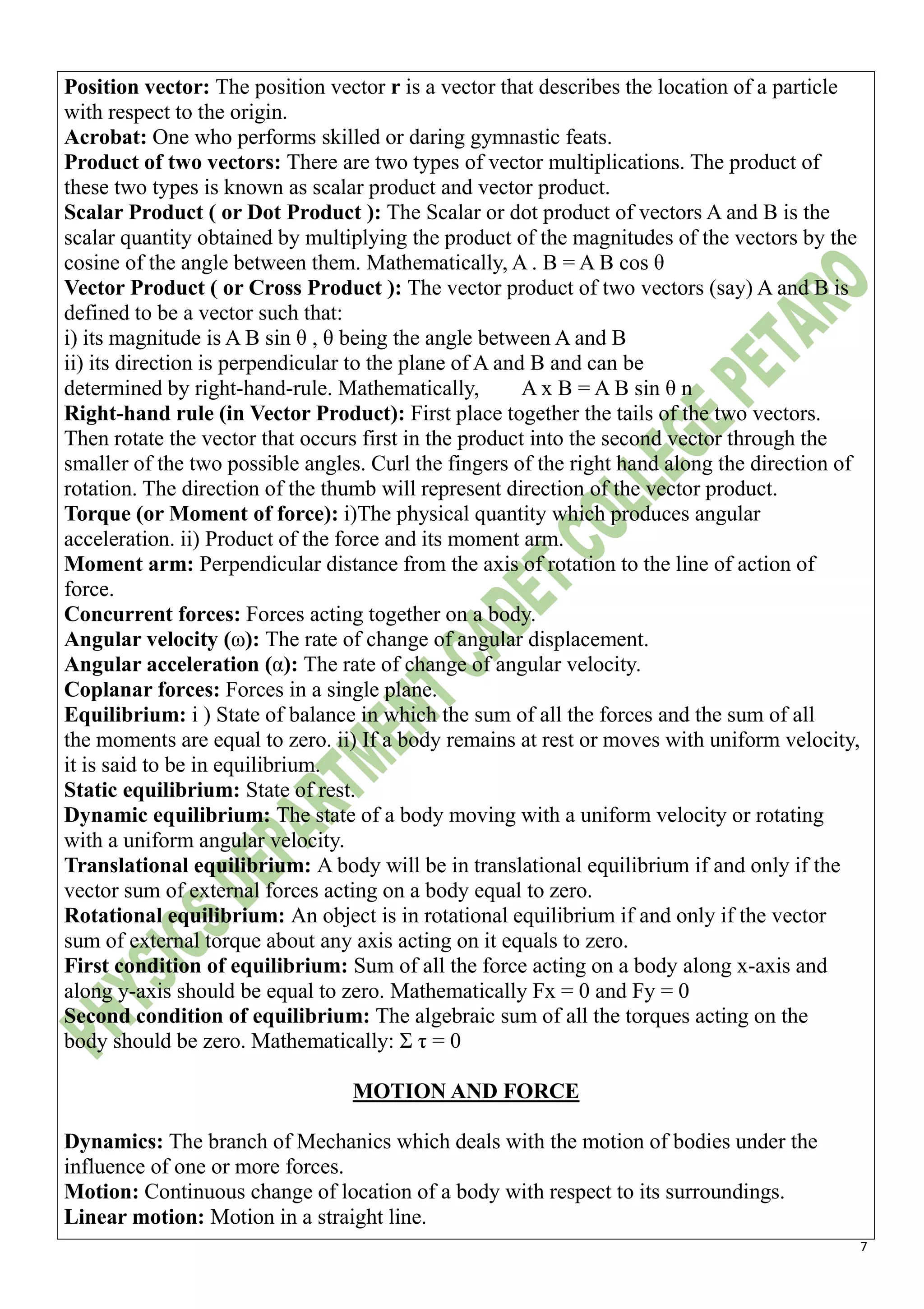

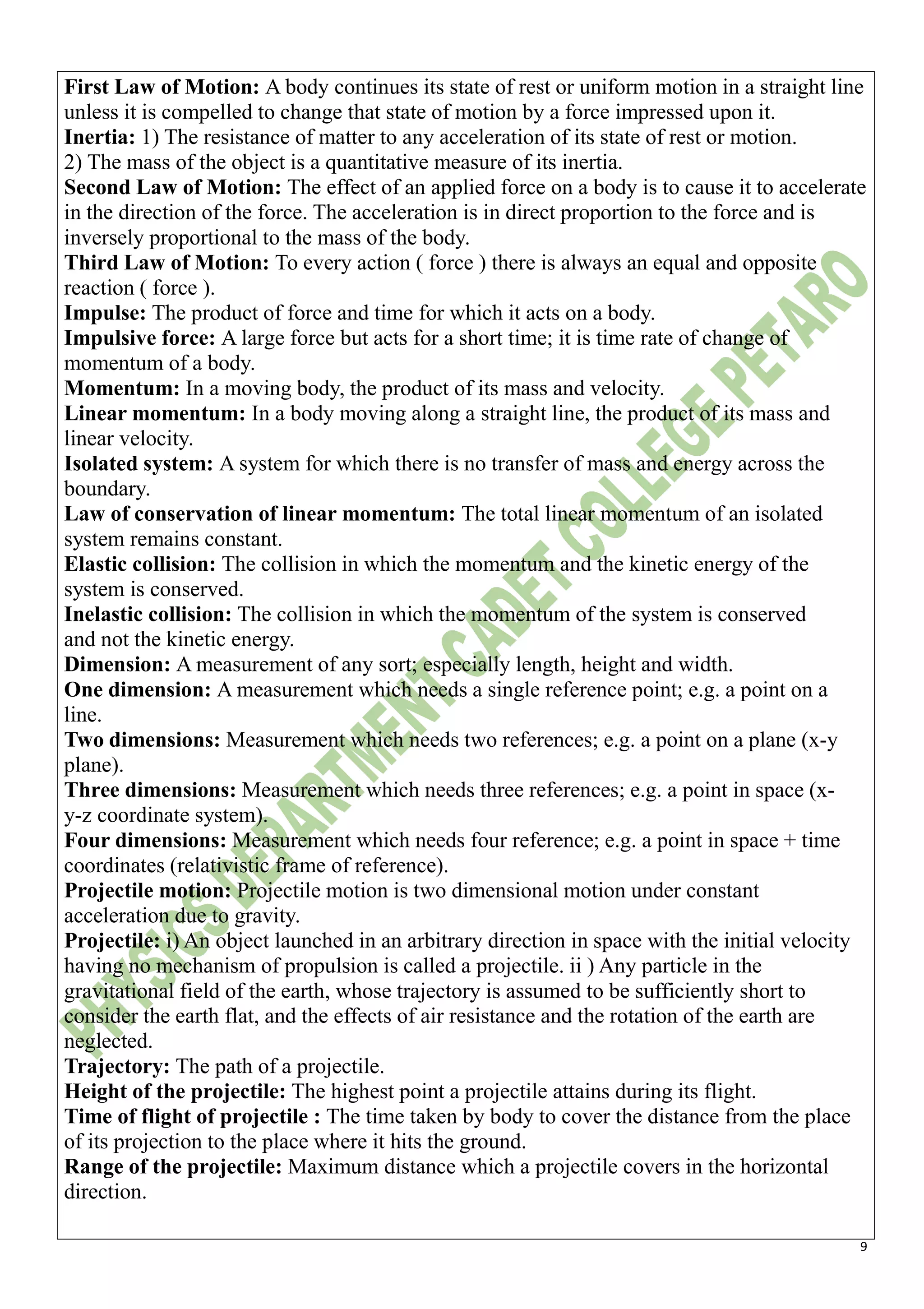
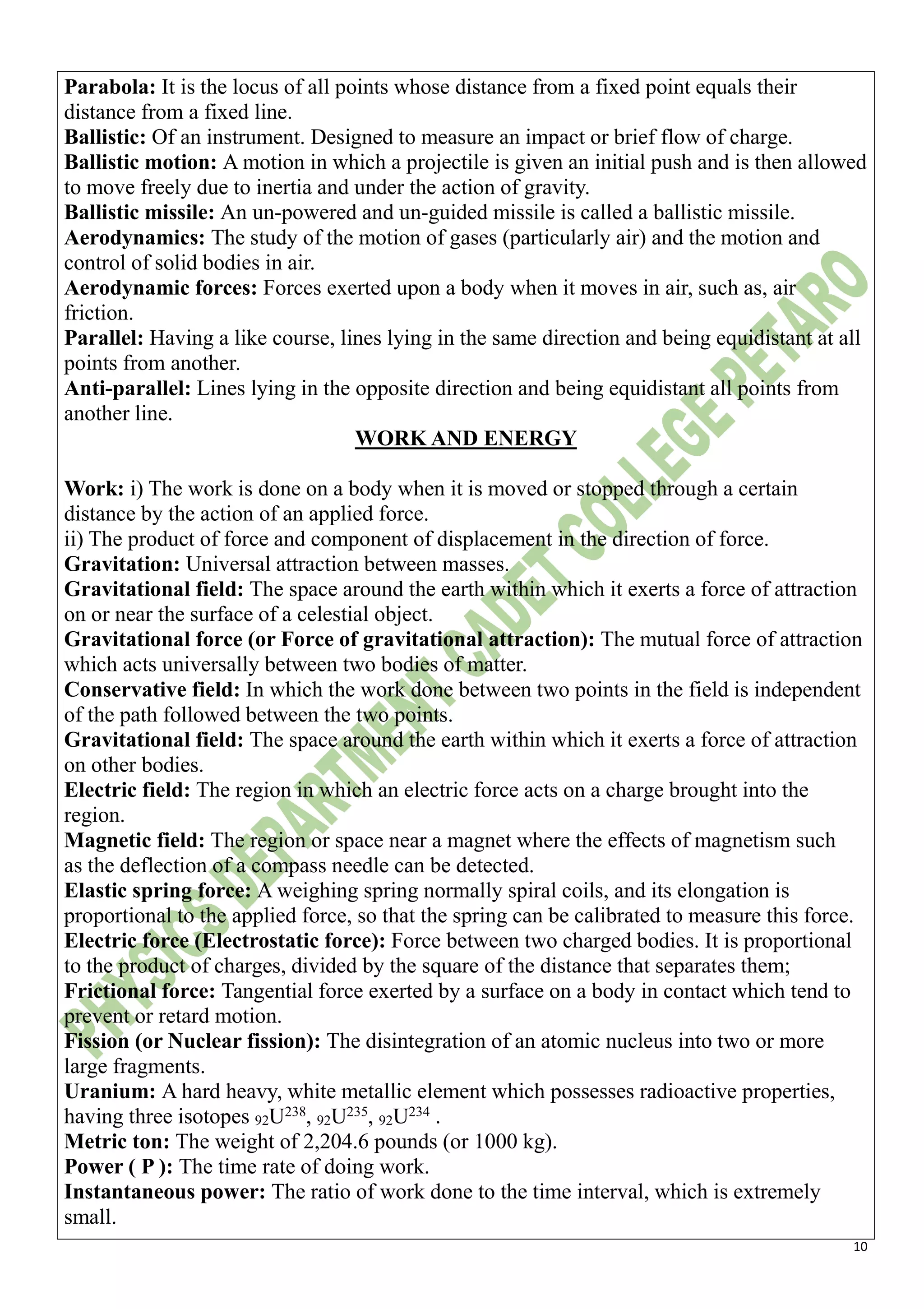
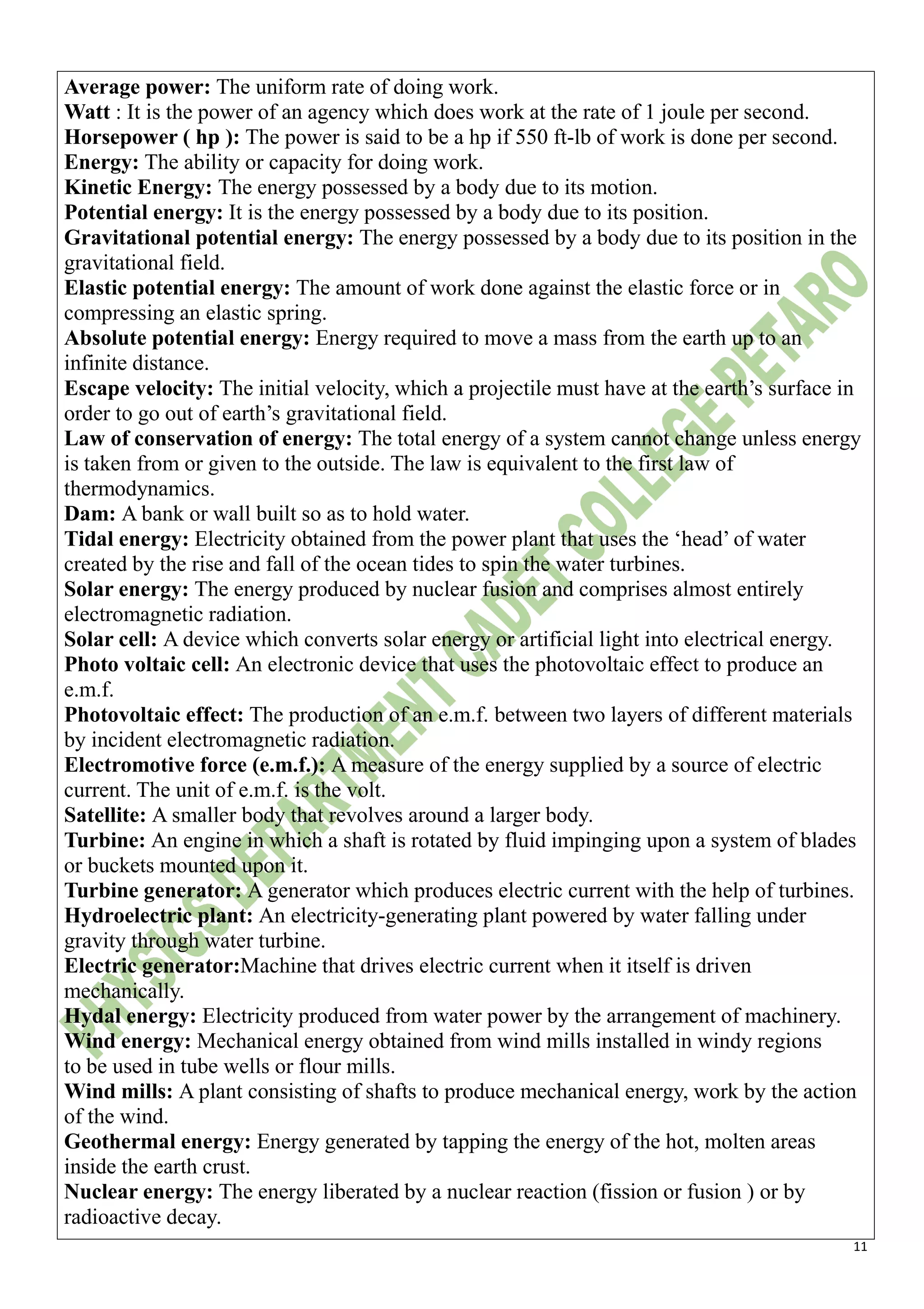
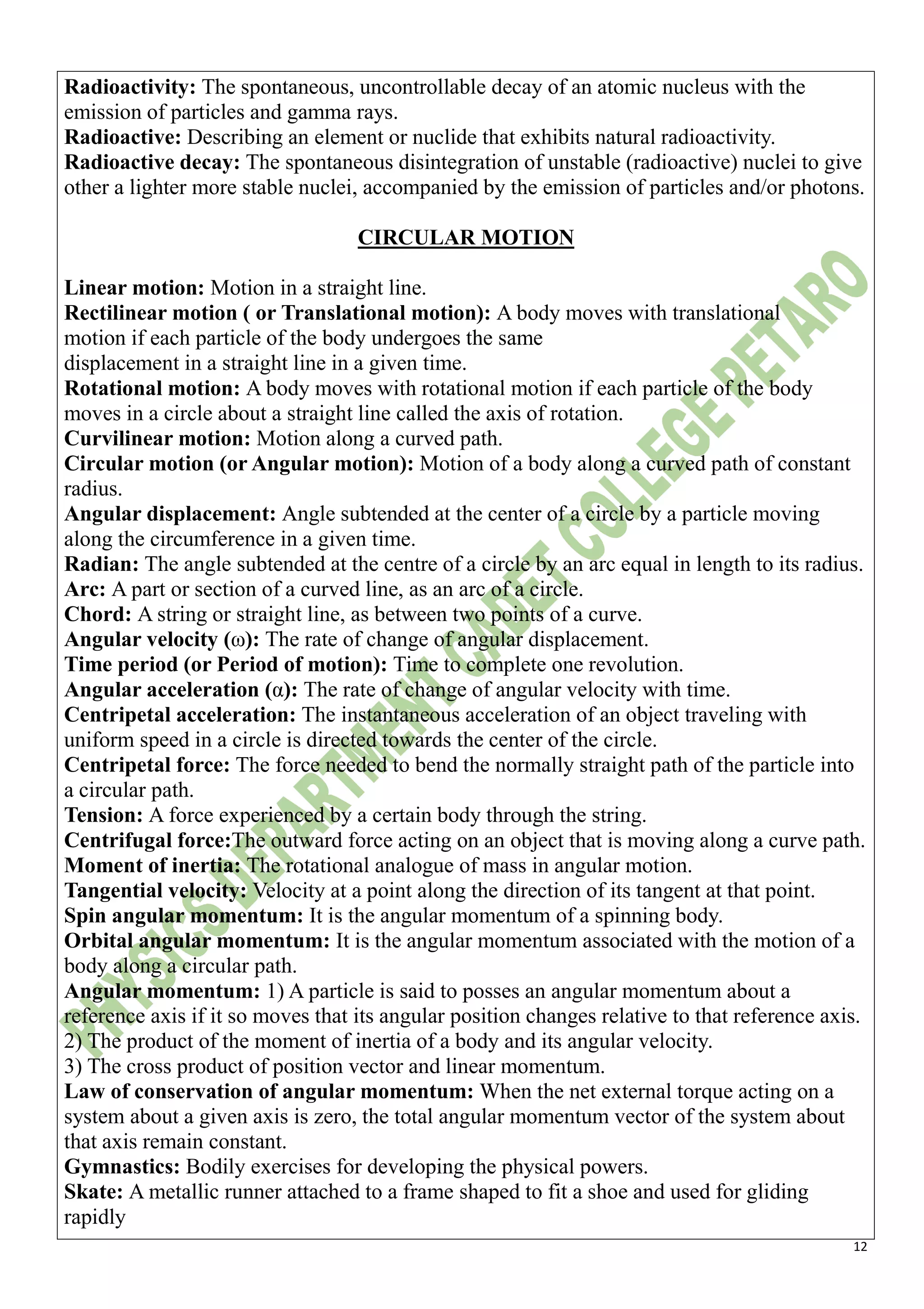
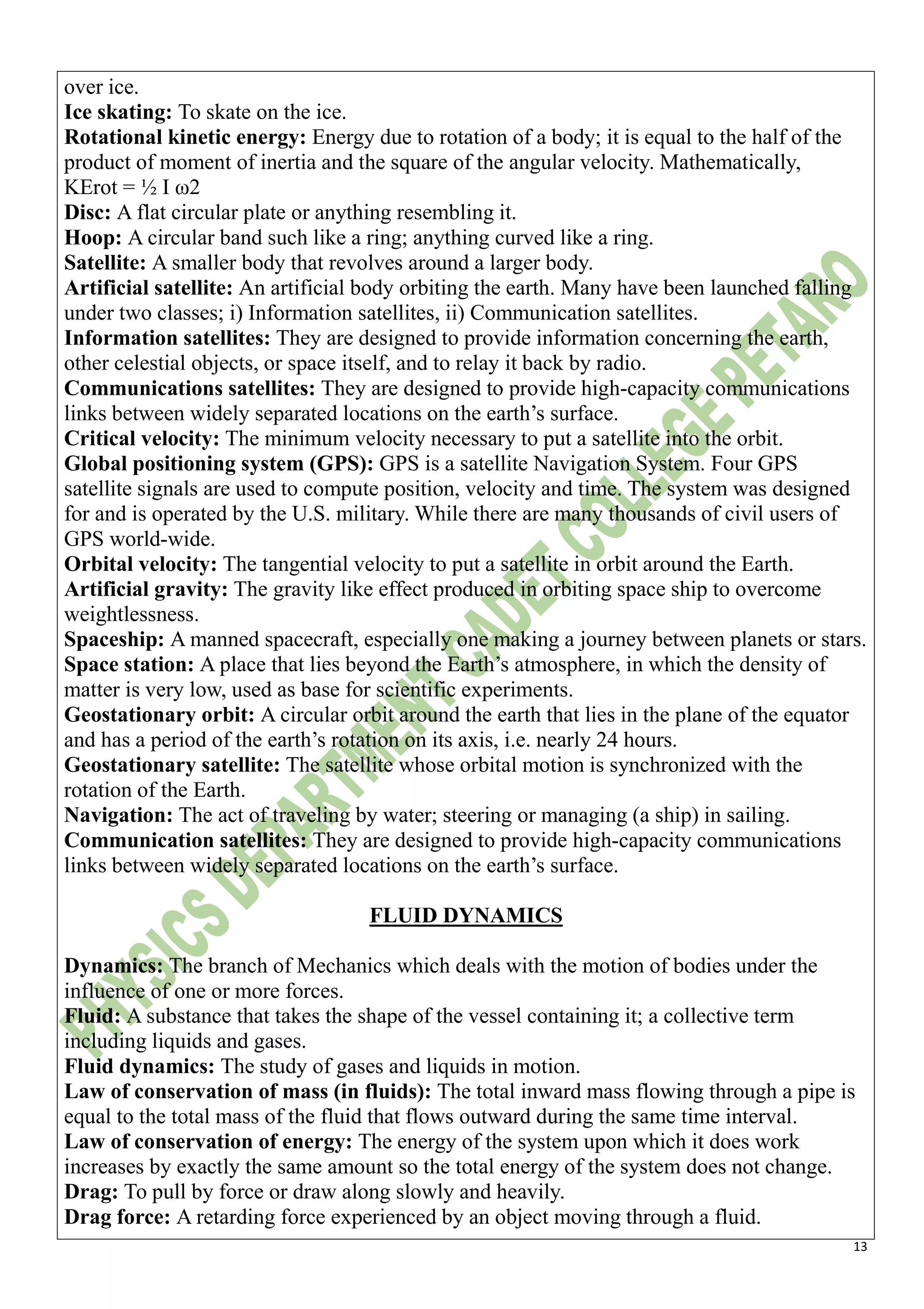
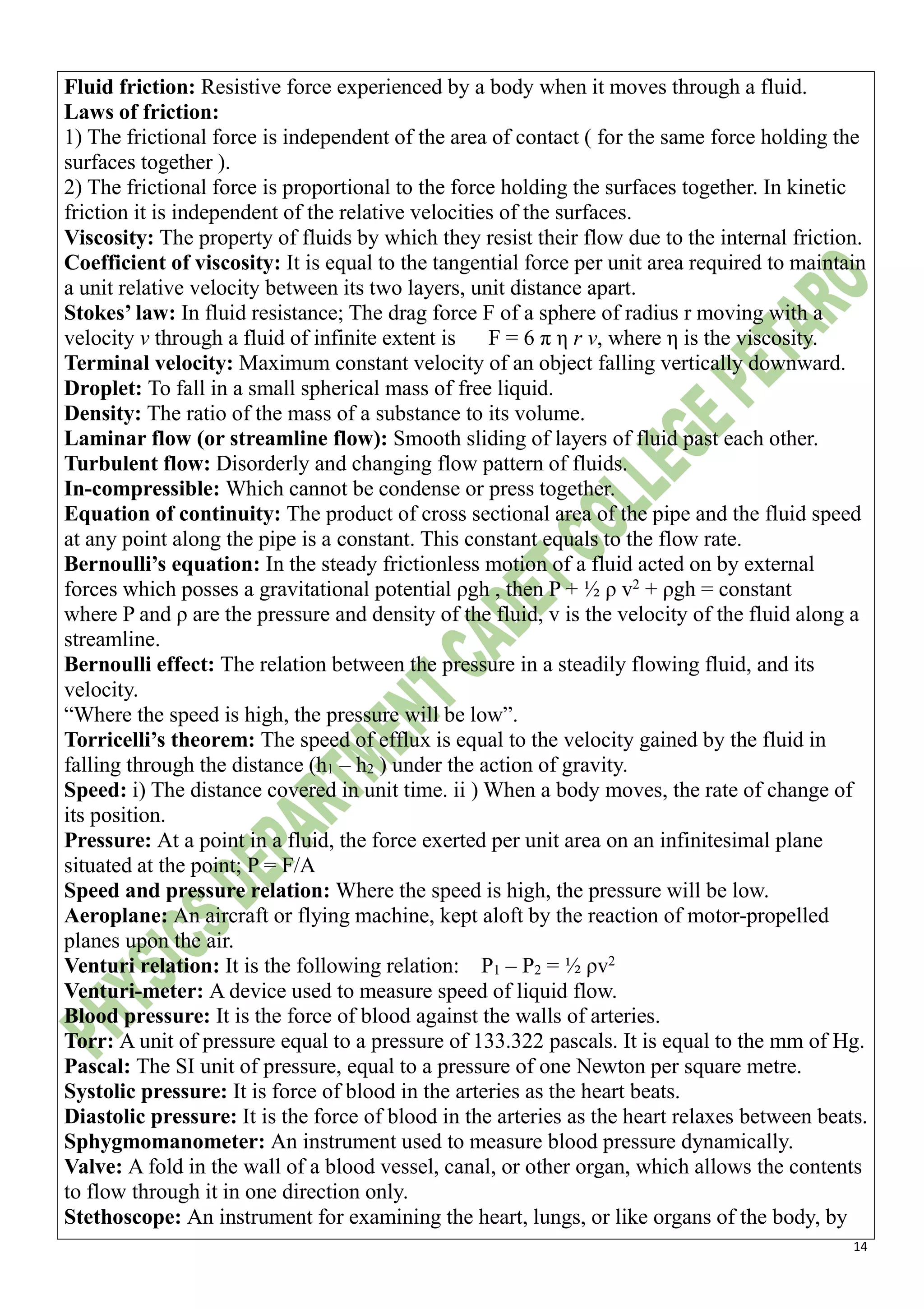
![15
listening to the sounds which they make.
Gauge: An instrument for measuring, indicating or regulating the capacity, quantity,
dimensions, power, amount of anything.
Nobel Laureate/ prize: A fund of $ 9 million was set up. The interest of which is annually
distributed among six important discoveries or inventions in Physics, Chemistry, Medicine,
literature, Economics, and for peace among nations. It is according to the will of Alfred
Bernhard Nobel (1833 – 1896).
OSCILLATIONS
Translatory motion (or Rectilinear motion): A body moves with translational motion if
each particle of the body undergoes the same displacement in a straight line in a given time.
Rotatory motion: A body moves with rotational motion if each particle of the body
moves in a circle about a straight line called the axis of rotation.
Vibratory motion (or Oscillatory motion): 1) To and fro motion of a body about its mean
position. 2) If the motion is back and forth over the same path about a mean position, it is
called vibratory or oscillatory motion.
Periodic motion: A motion which repeats itself in equal intervals of time.
Periodic: Pertaining to a definite round of time; occurring or reoccurring at definite
intervals.
Bob: A weight, e.g. a cork or small metallic mass, as on a pendulum.
Elasticity: The property of a material body to regain its original condition, on the
removal of the deforming forces.
Stress: The distorting force per unit area set up inside the body.
Strain: The change produced in the dimensions of a body under a system of forces.
Hook’s Law: Within the limits of perfect elasticity stress is directly proportional to strain.
Hooke’s law (modified form): Applied force on a body is directly proportional to the
displacement. As stress ∝ strain or F/A ∝ l /Lo or F ∝ (A/Lo ) l
or F ∝ l [ A & Lo being constant ] or F ∝ x or F = k x
Simple Harmonic Motion: i) The projection of uniform circular motion upon any diameter
of a circle. ii ) A particle is said to posses a simple harmonic motion if its acceleration is
always directed towards the centre and its value is proportional to the displacement of the
particle from its central position.
Mean position: In to and fro motion, the central position around which a body moves.
Displacement: Distance from the equilibrium position at certain instant.
Instantaneous displacement: In a vibrating body, the value of its distance from the mean
position at any instant of time.
Amplitude: The maximum distance traveled by a vibrating particle from its mean position.
Vibration: One complete round trip of the body.
Time period: It is the time required to complete one vibration.
Frequency: It is the number of vibrations executed by a body in one second.
Angular frequency: The number of complete rotations per unit time.
Sinusoidal waveform: Wave shape made like sine wave or like a curve plot of the function
y = sin θ.
Circular motion: A form of periodic motion, that of an object moving at constant speed in
a](https://image.slidesharecdn.com/physicsdefinitions-210203103731/75/Physics-definitions-15-2048.jpg)
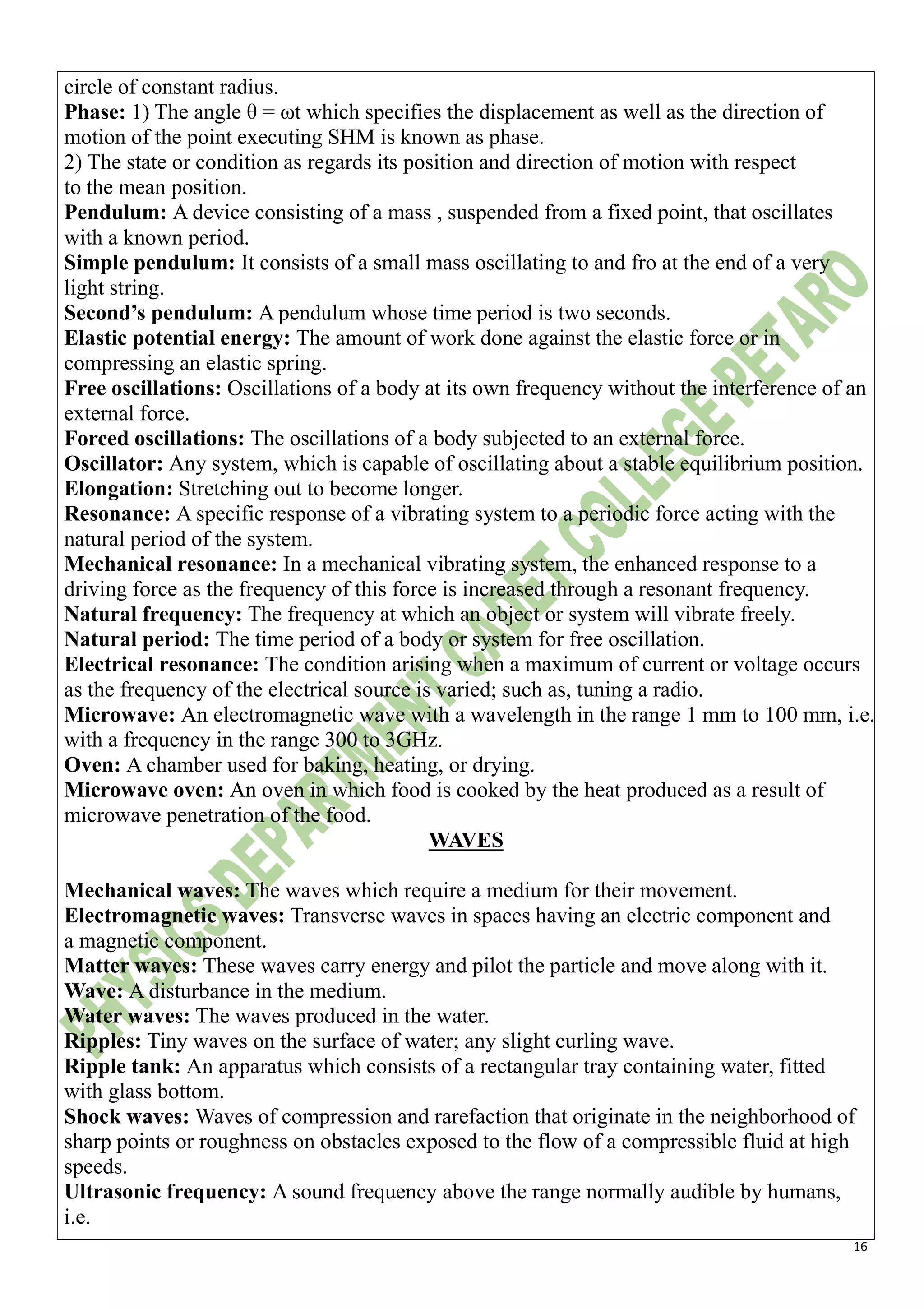
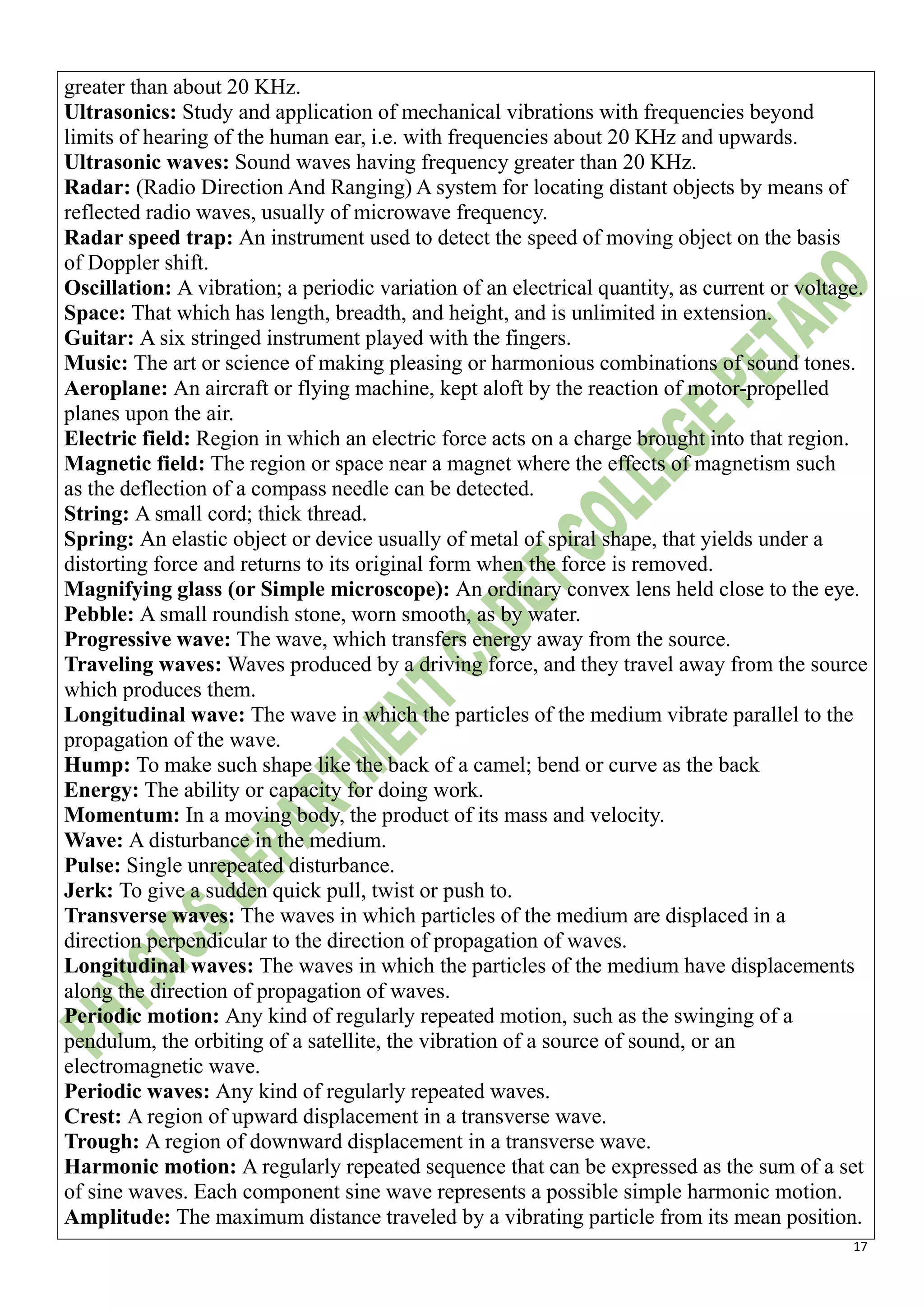
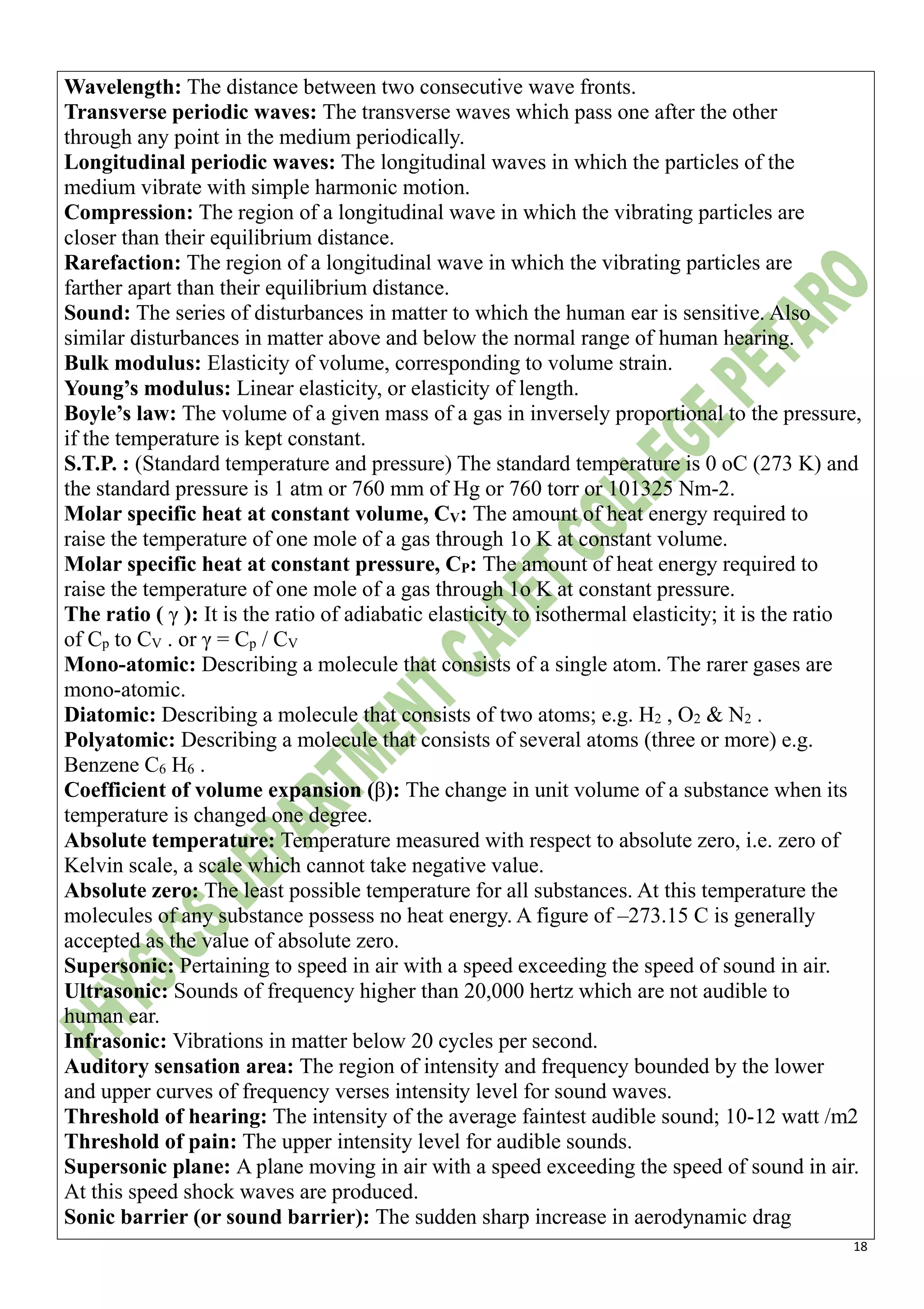
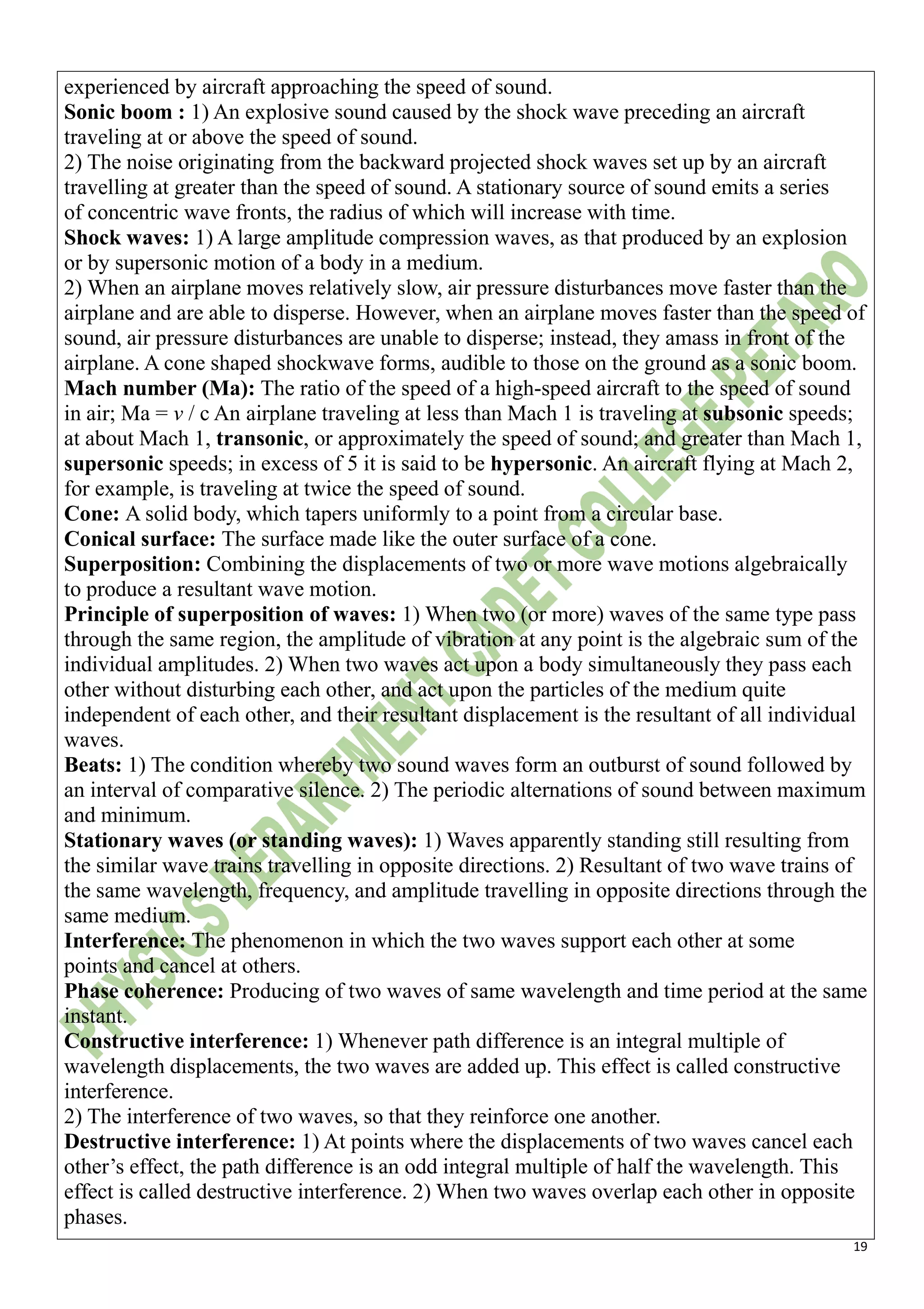
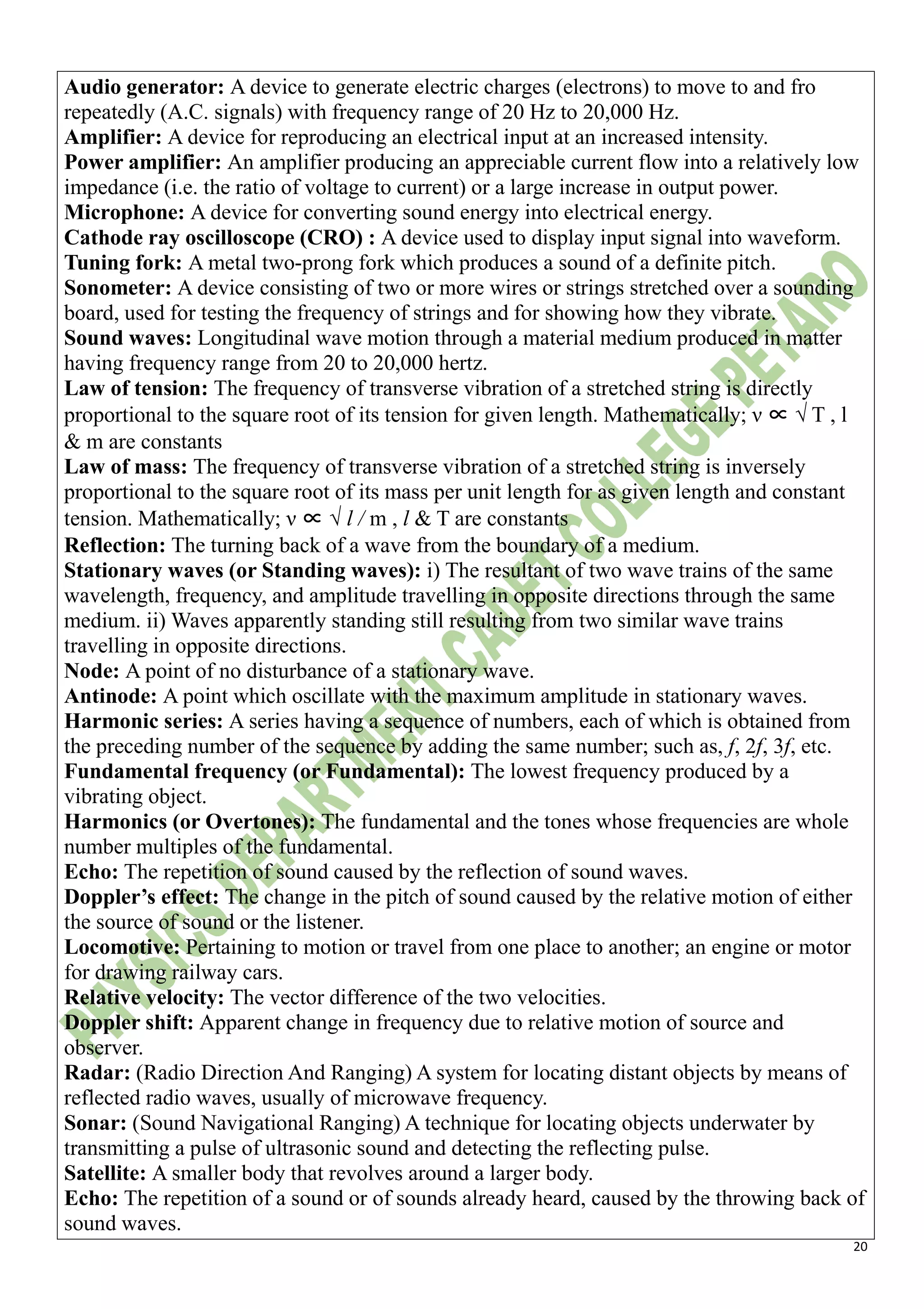
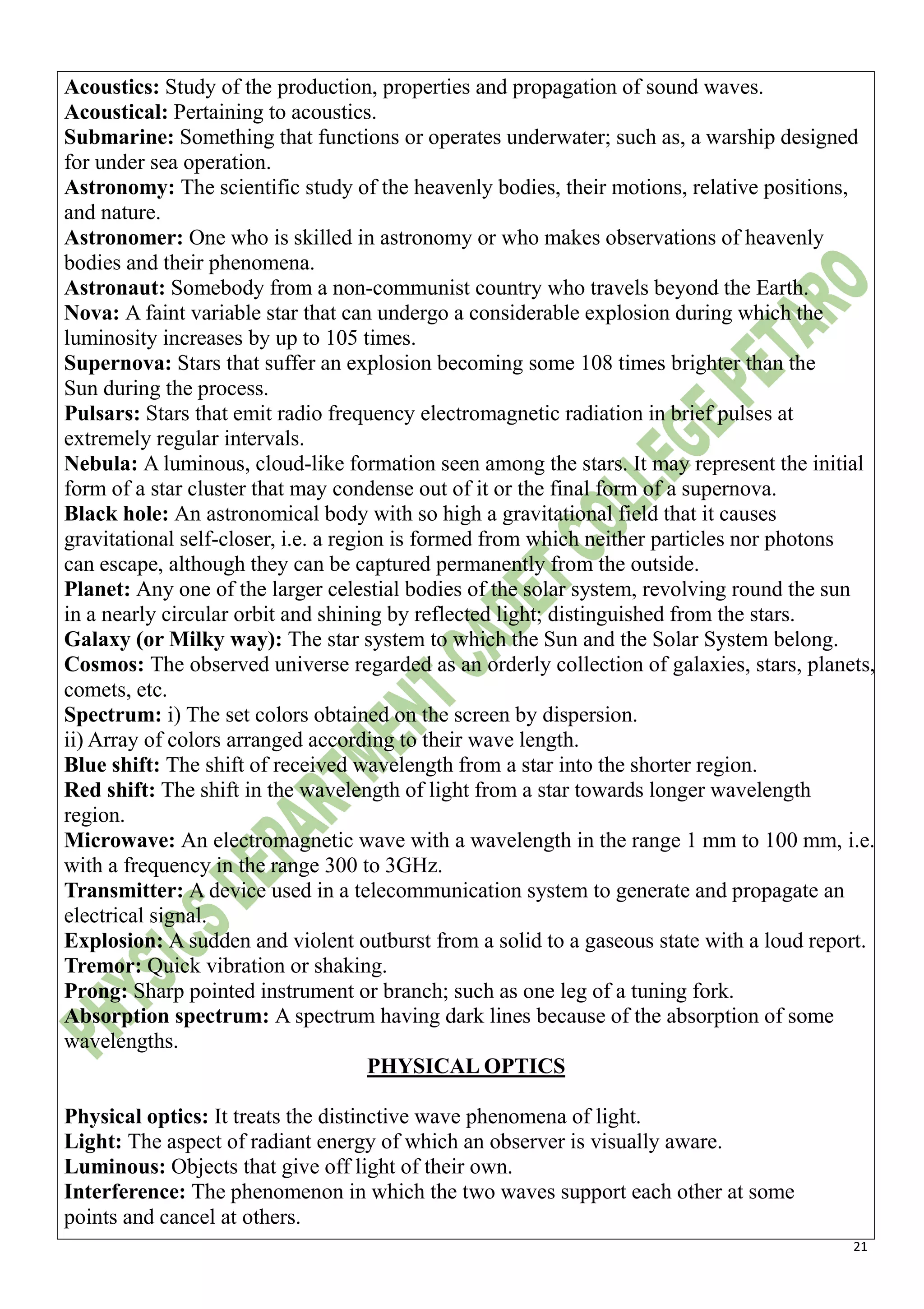

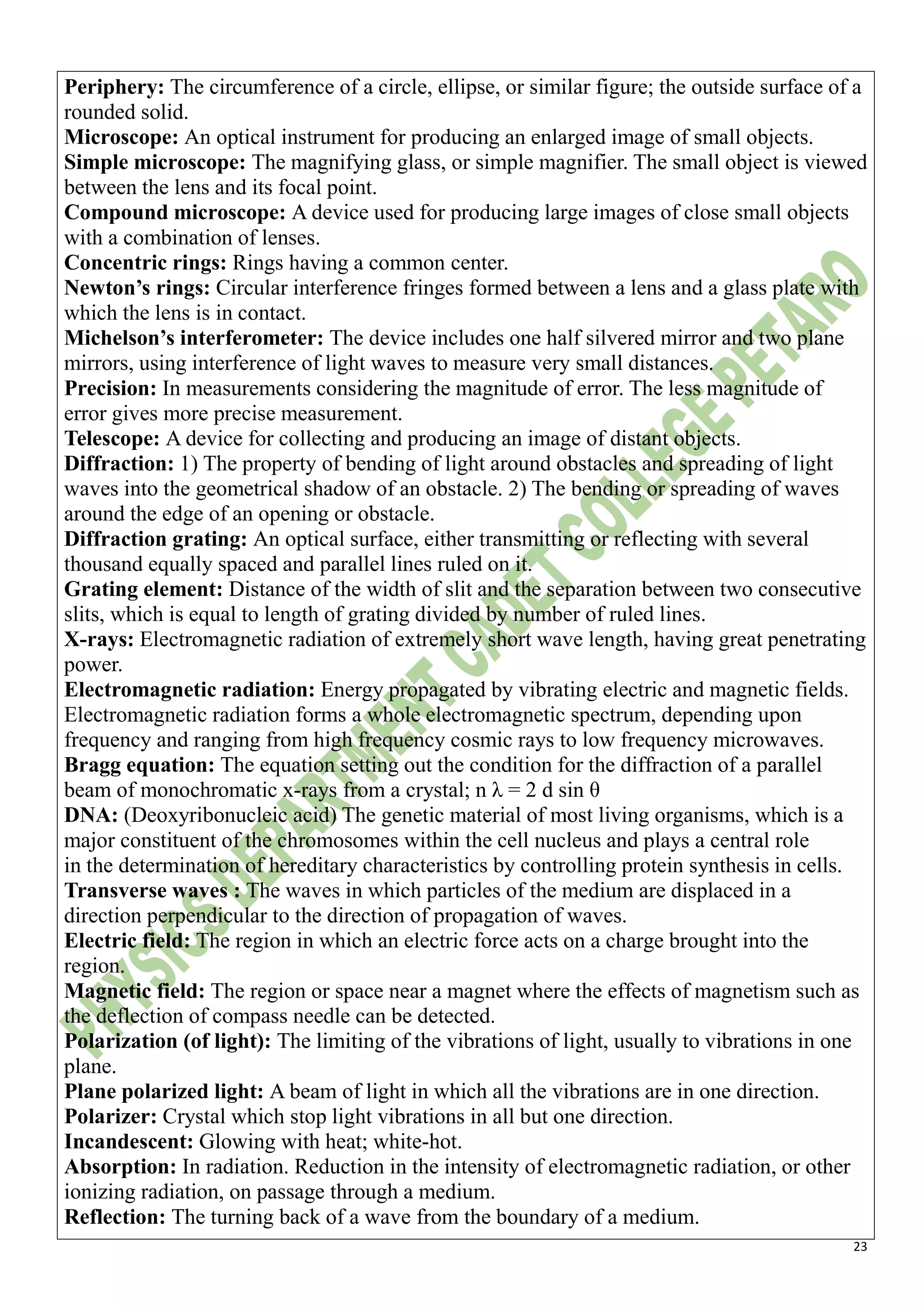
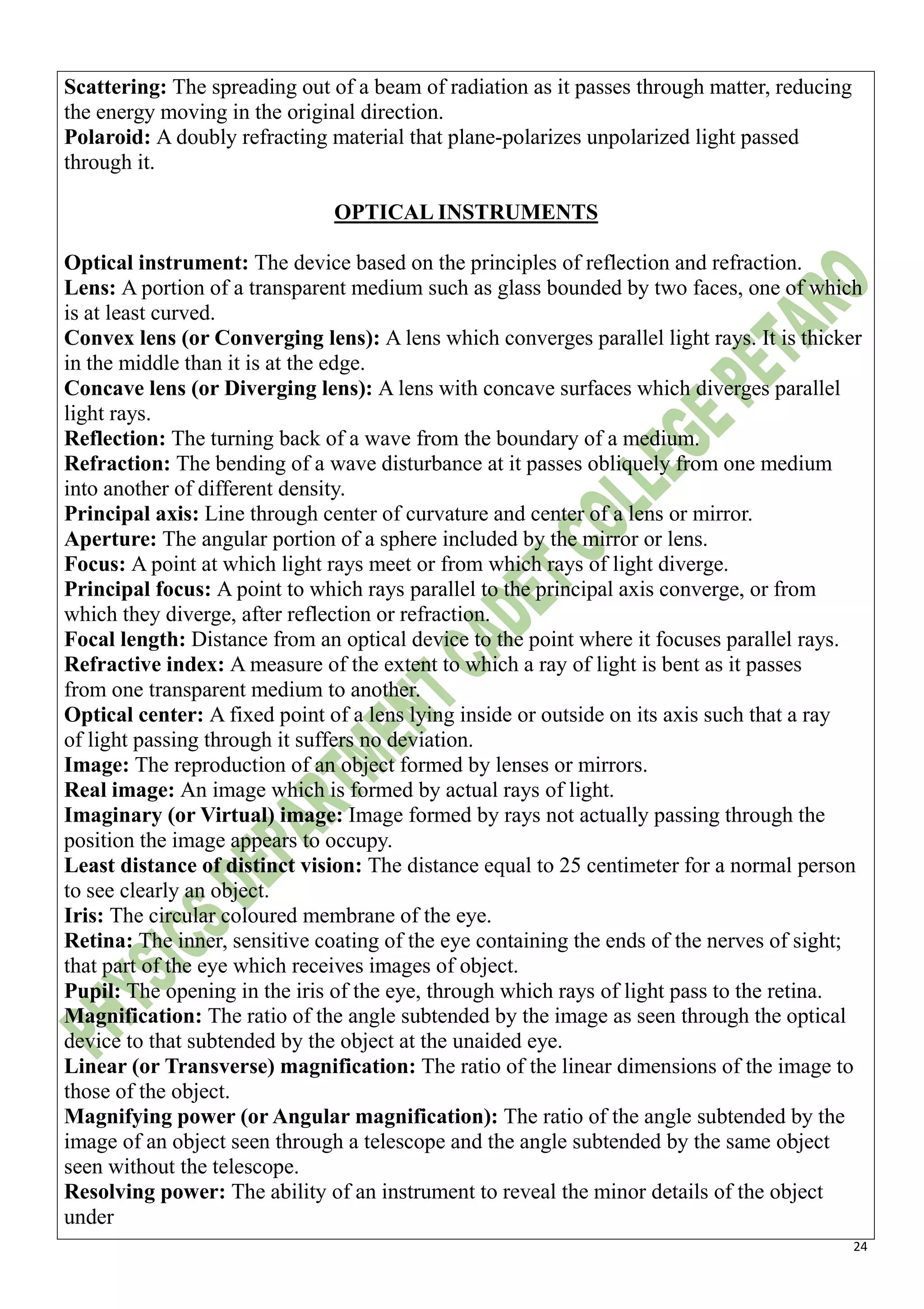
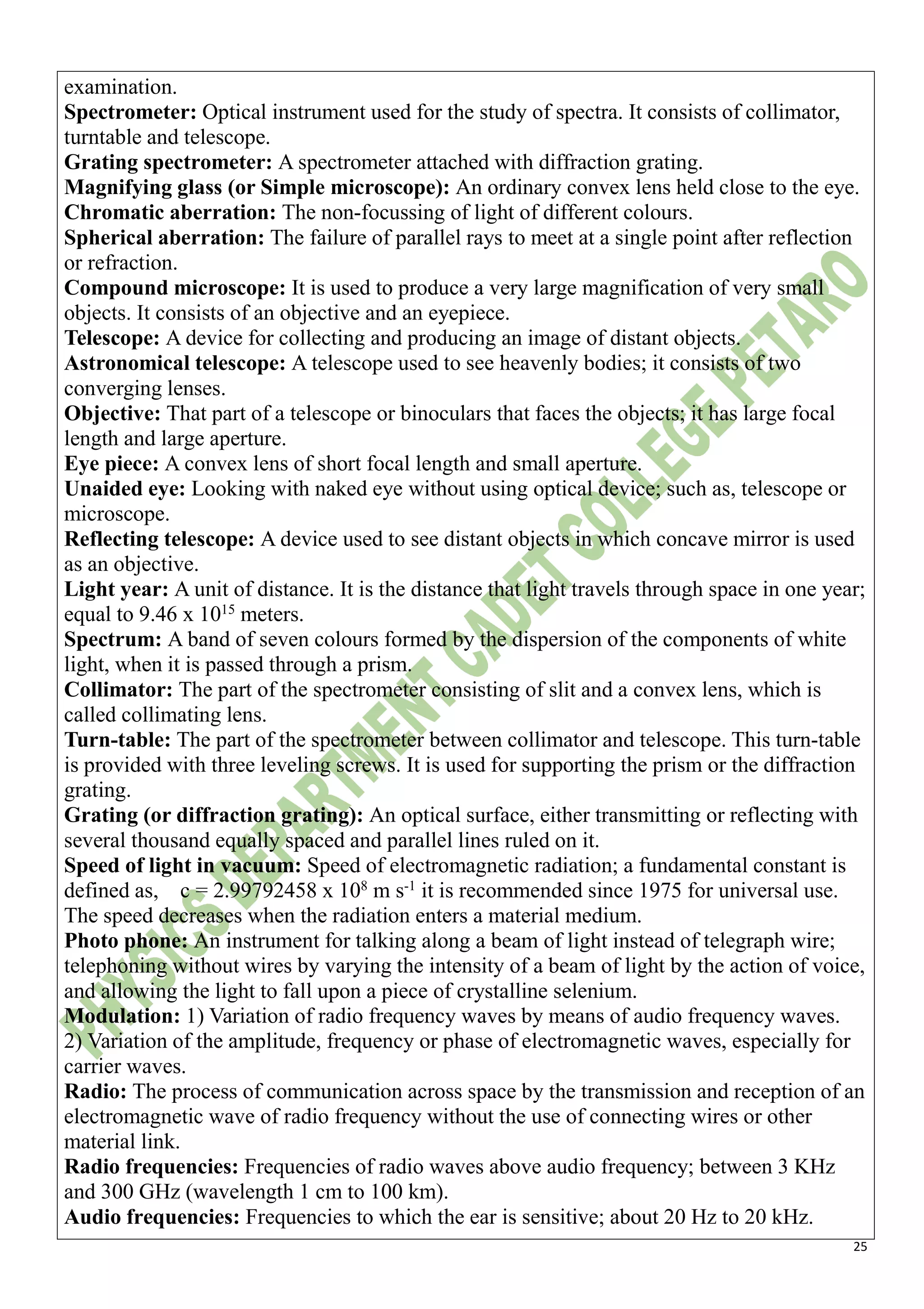
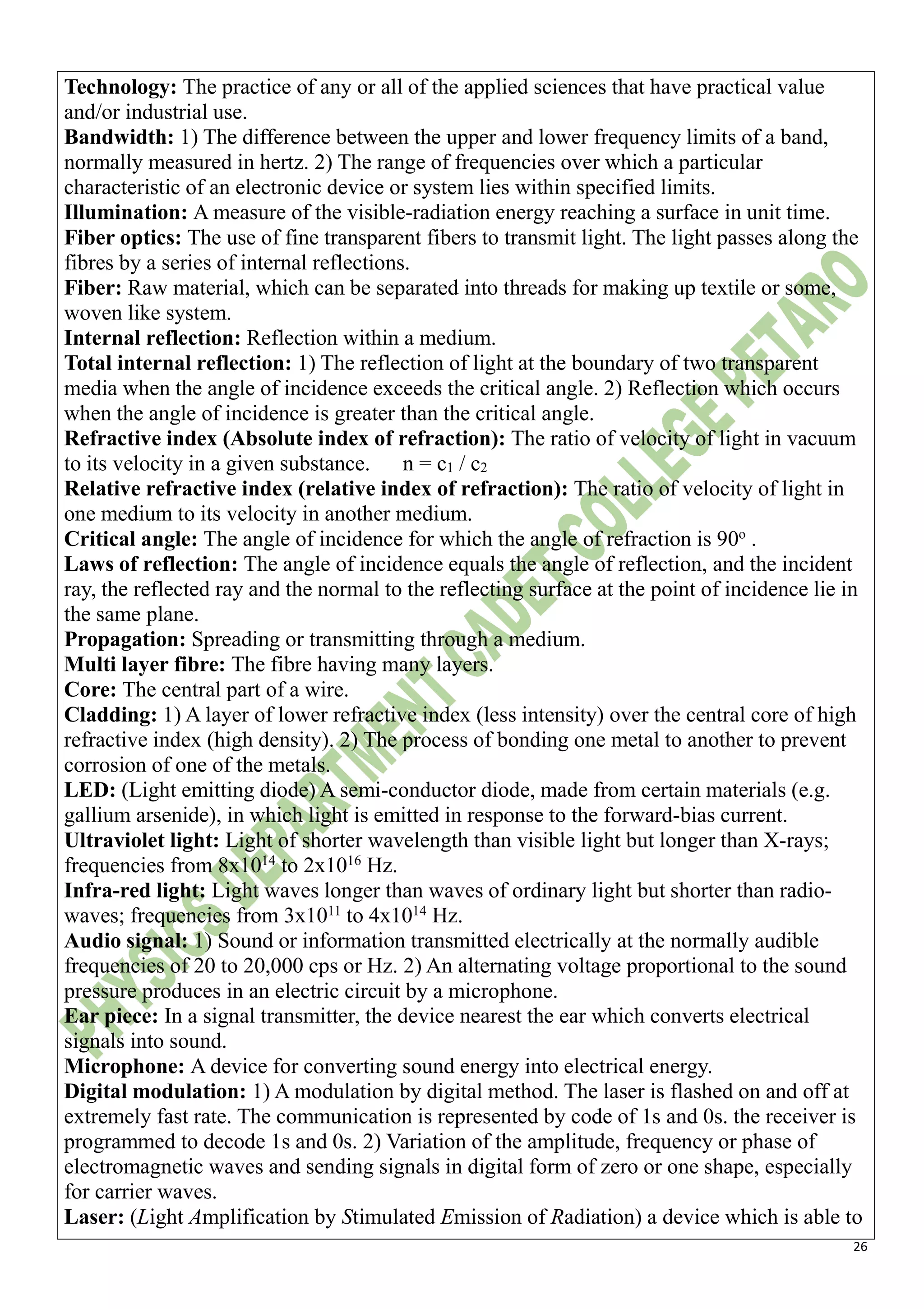
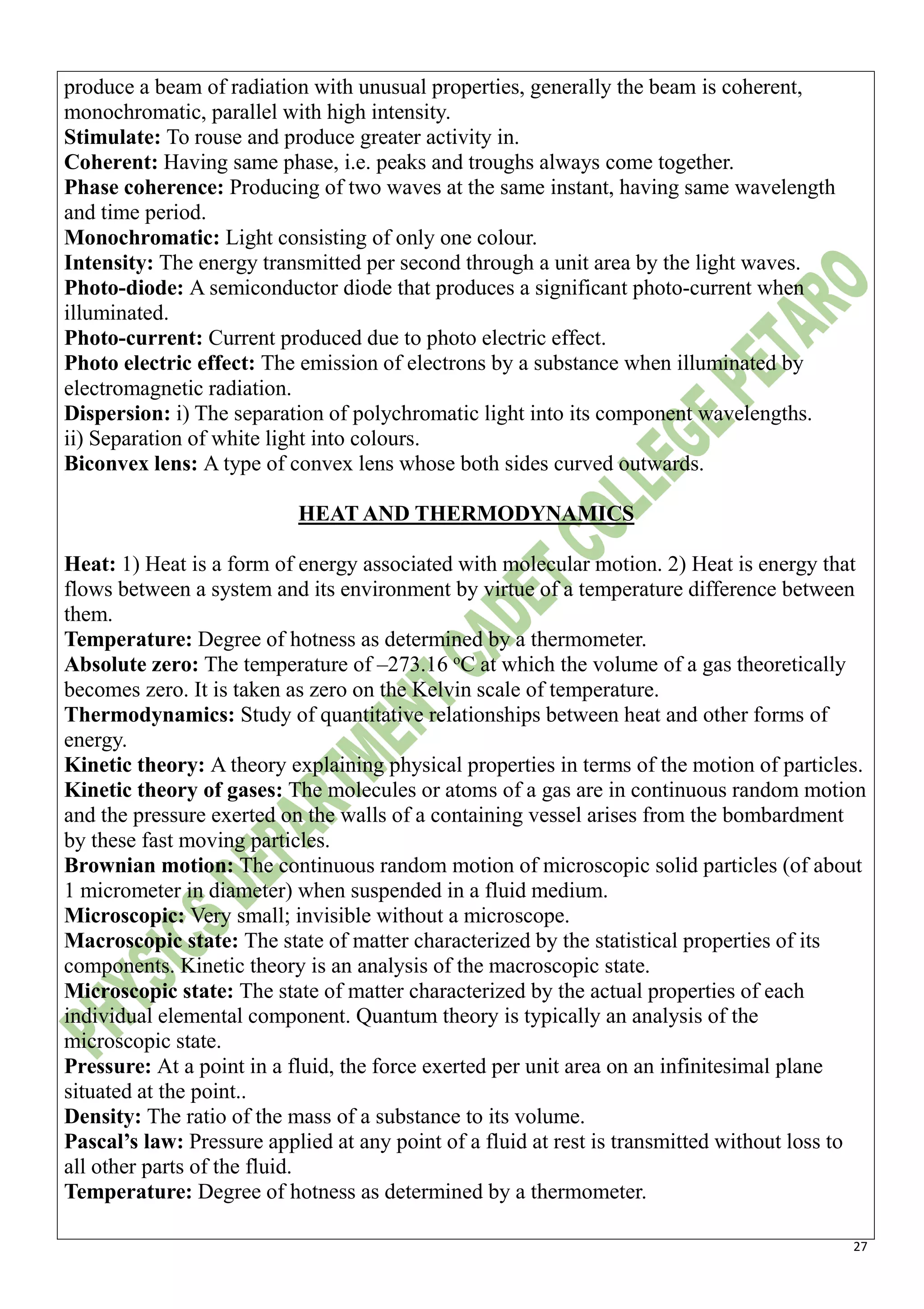
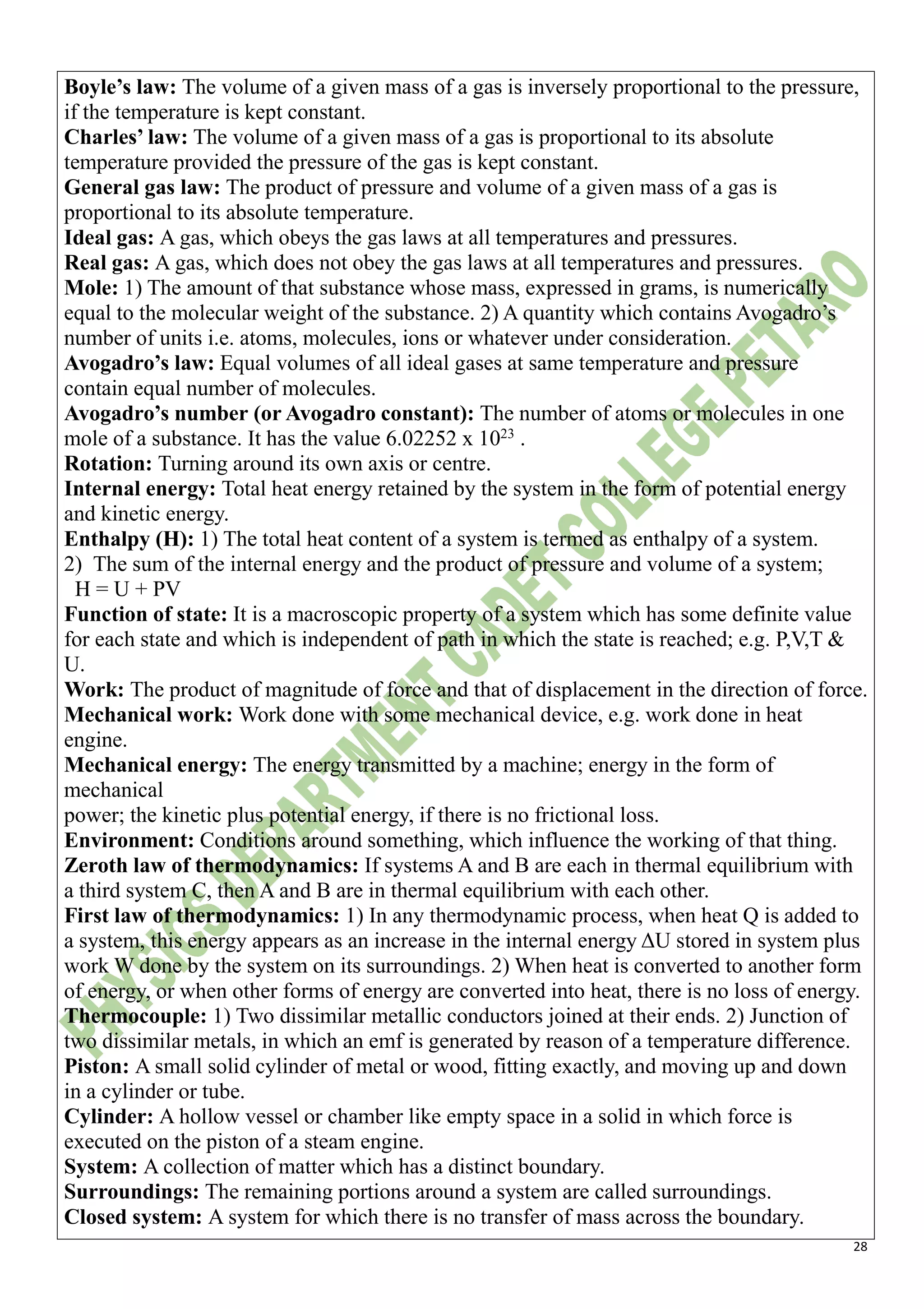
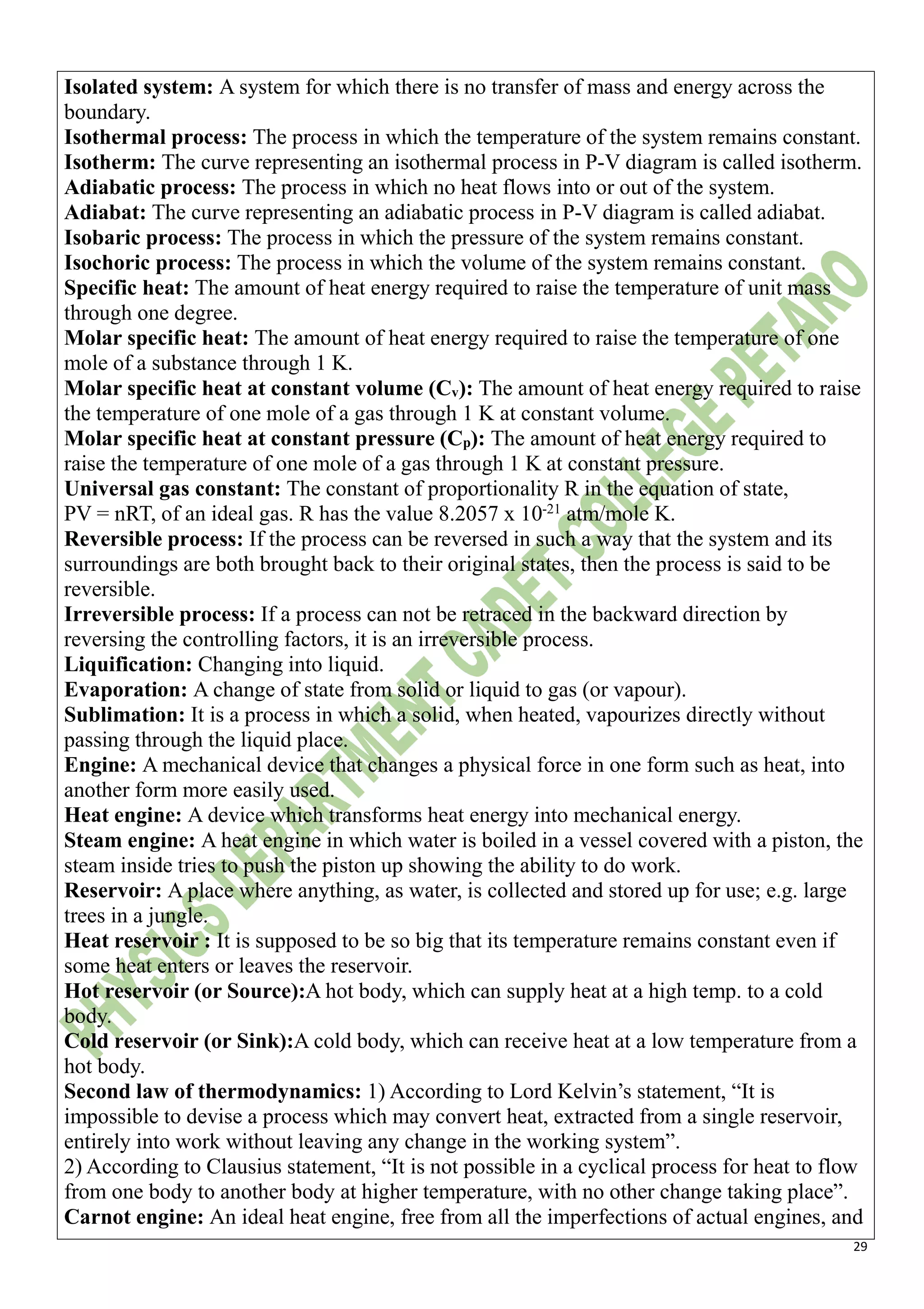

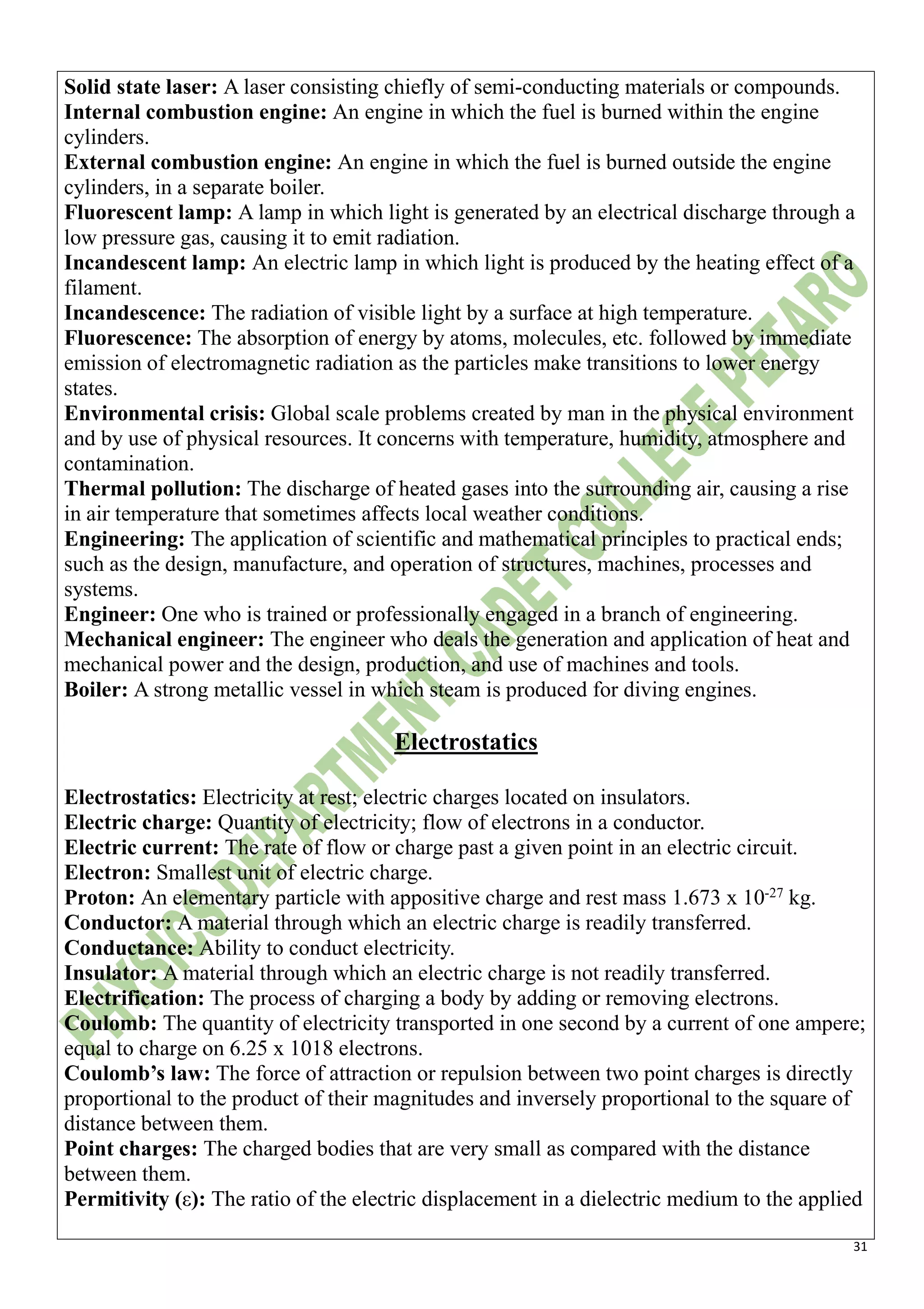
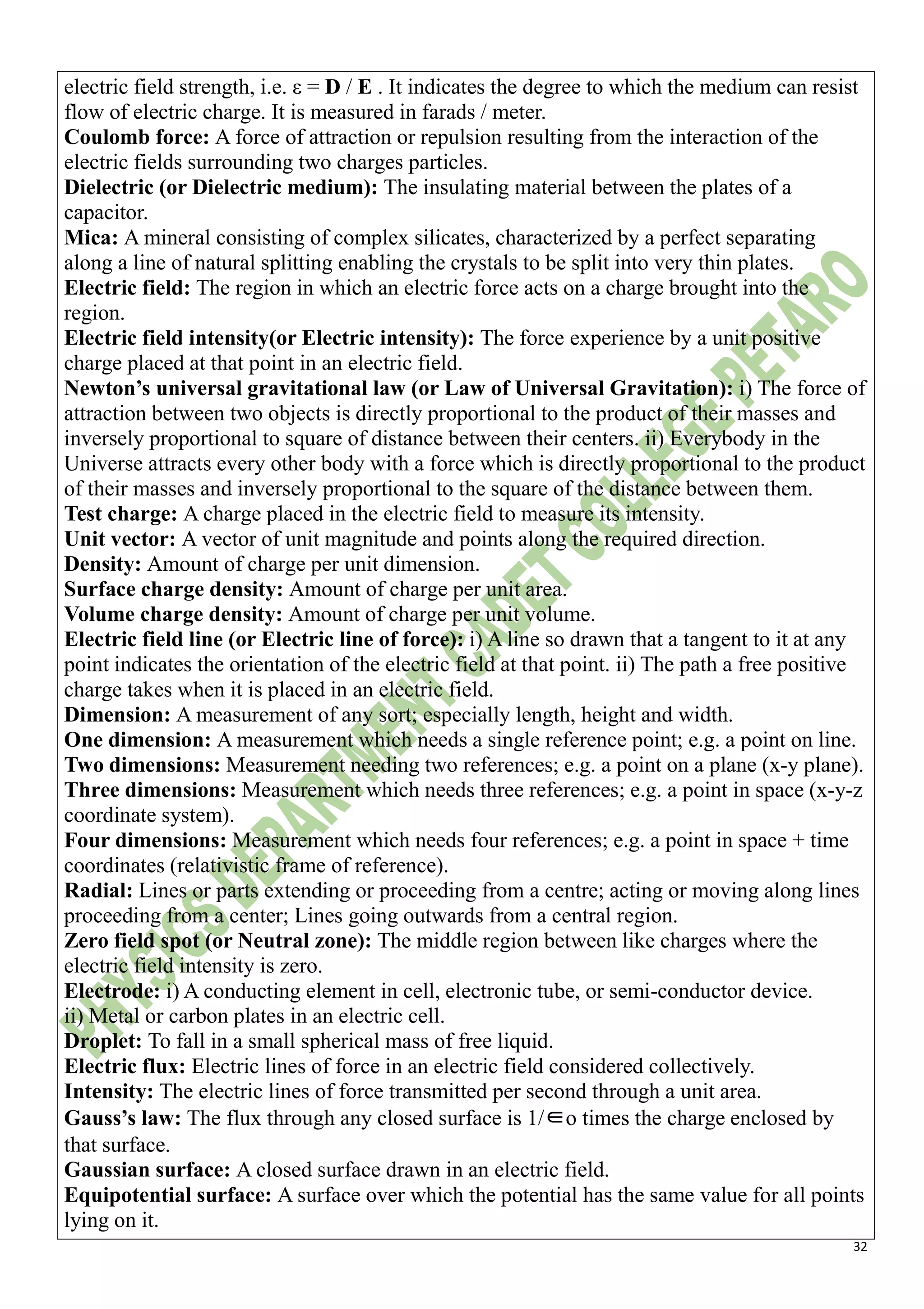
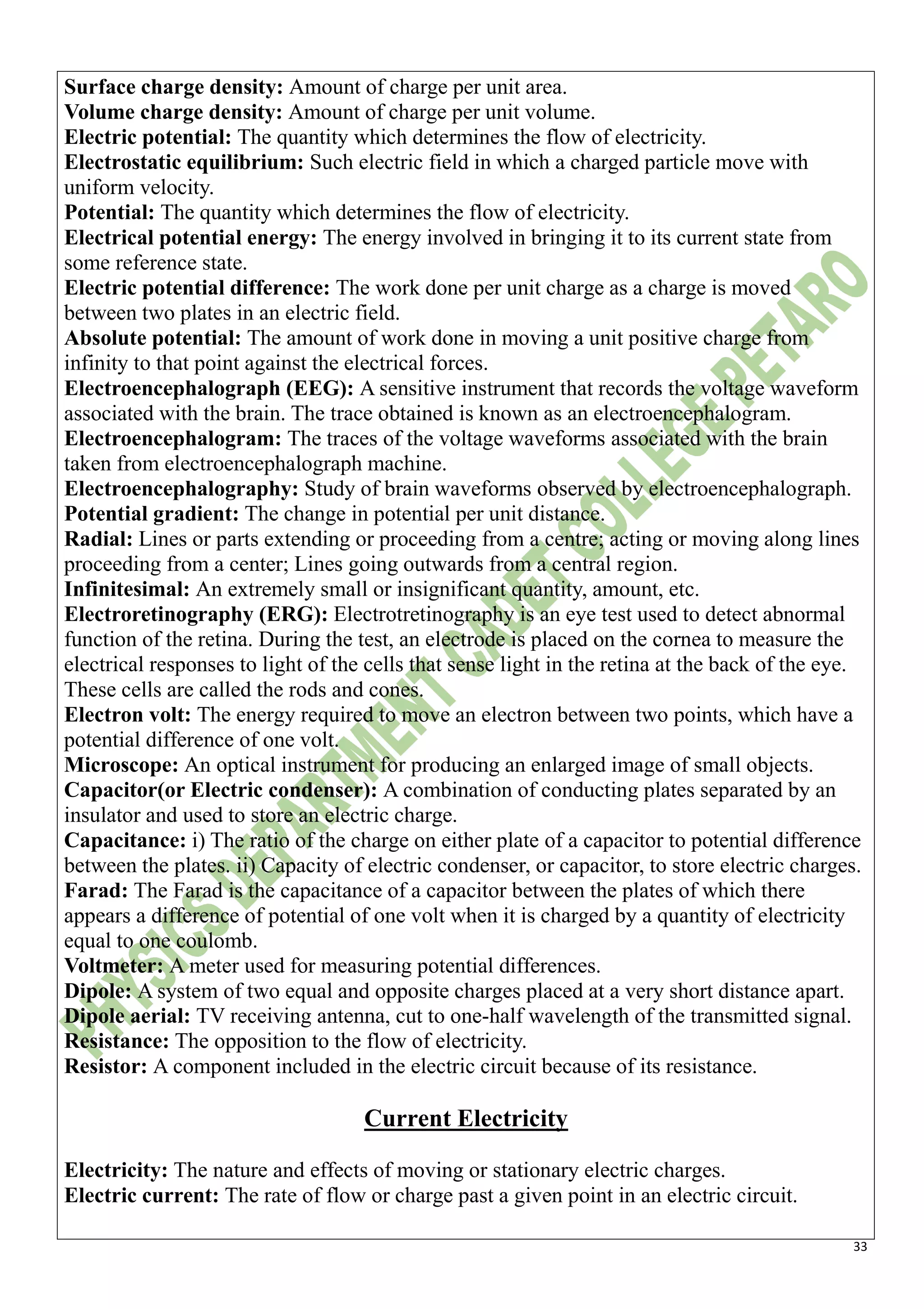
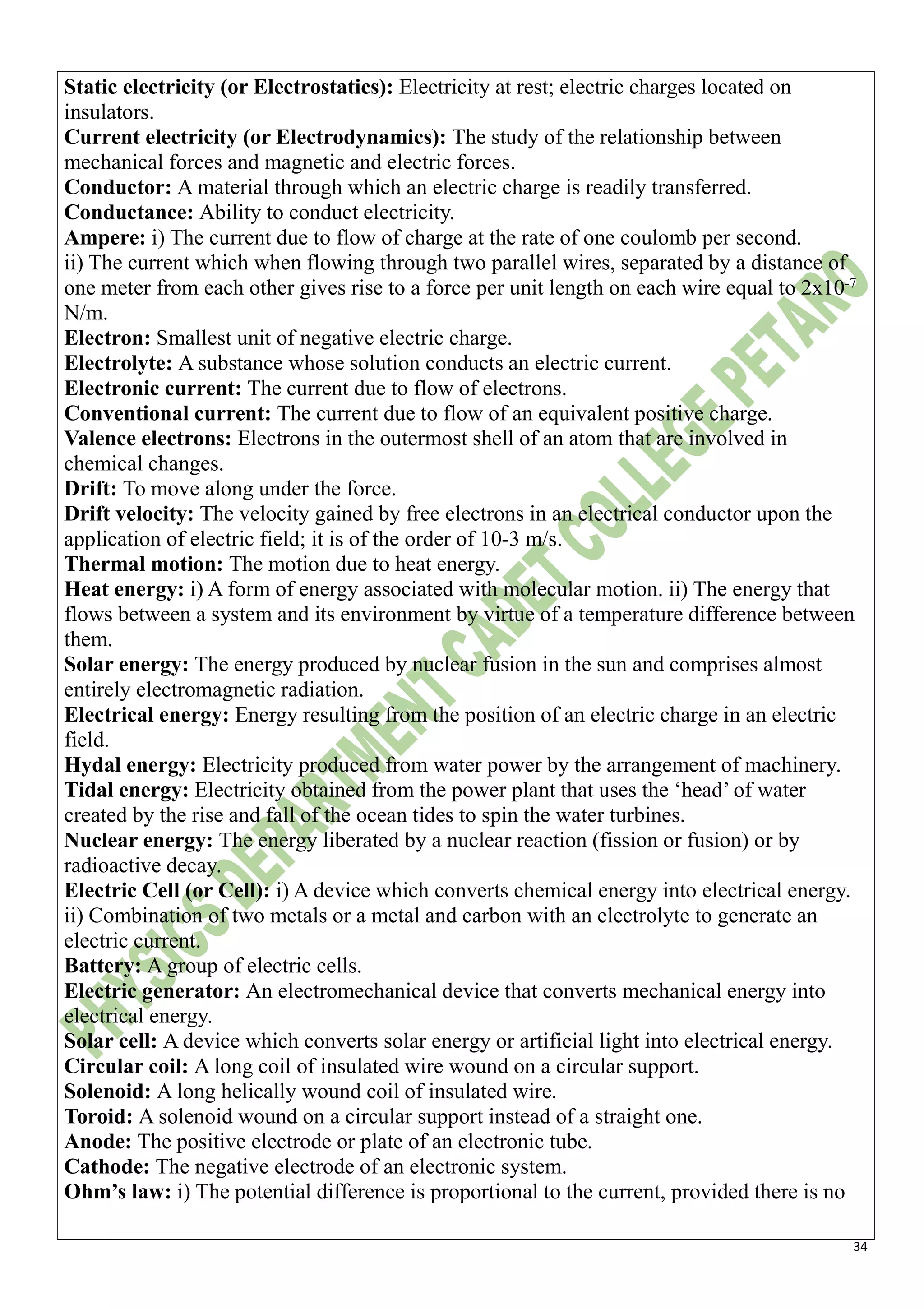
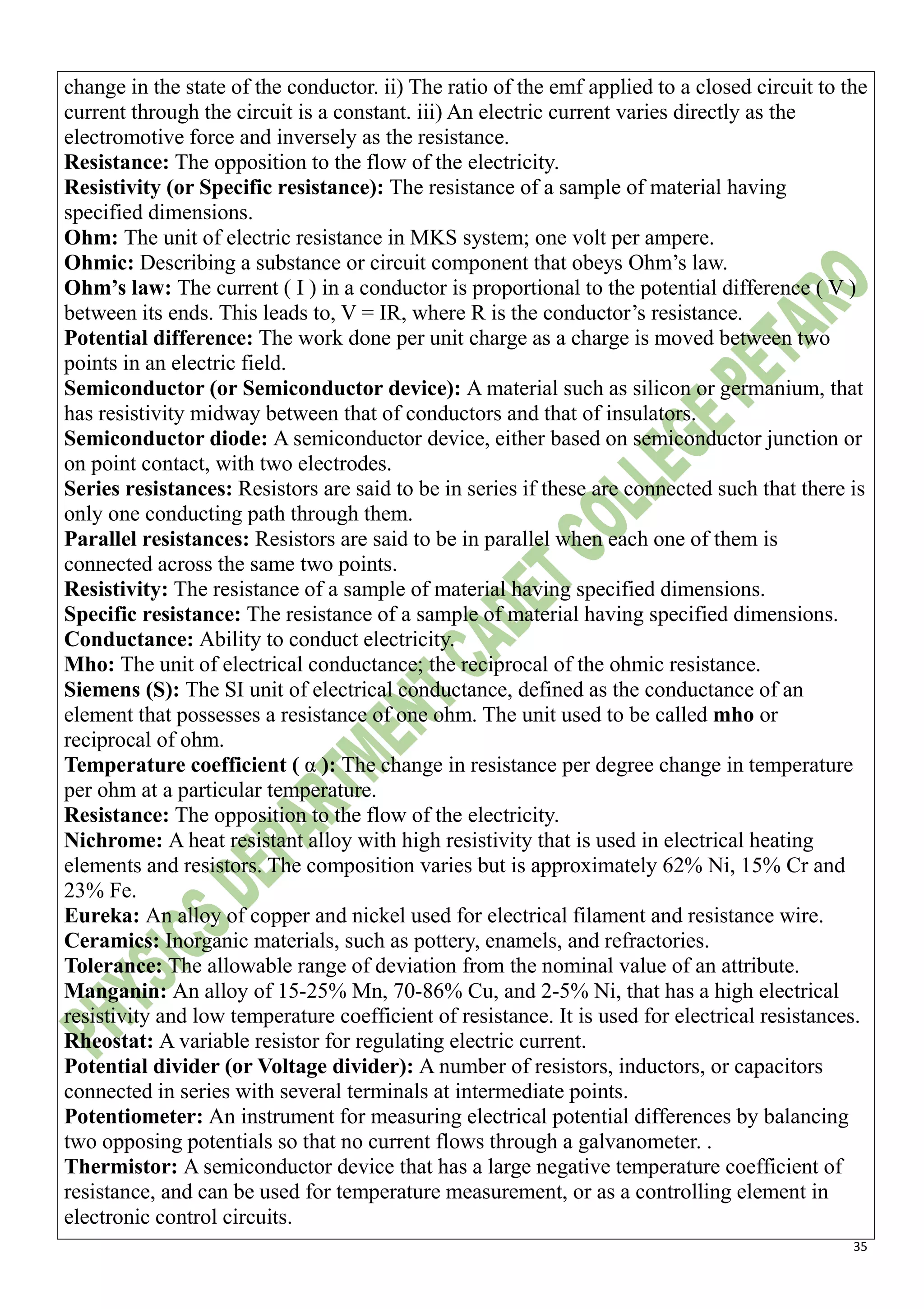
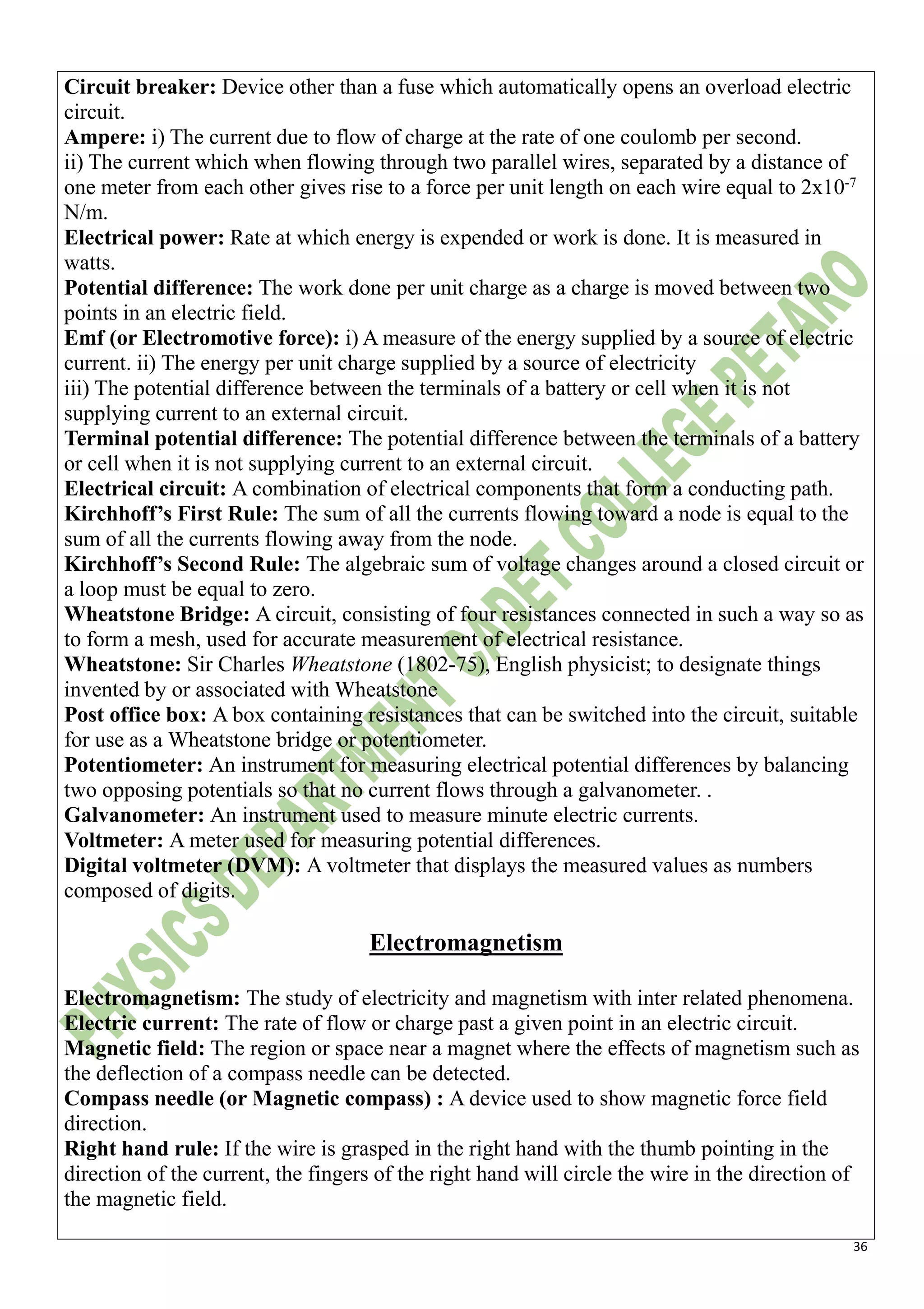
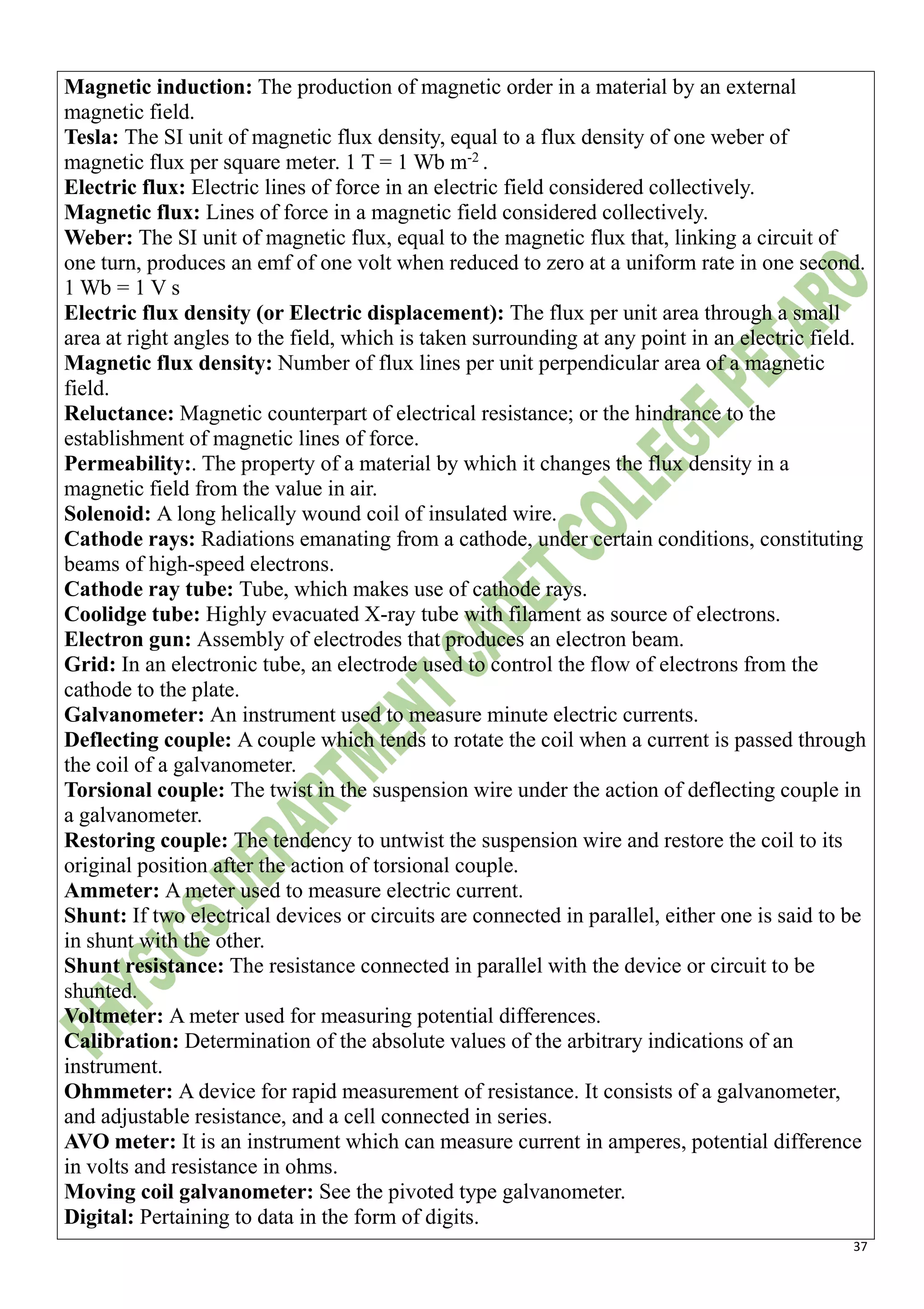
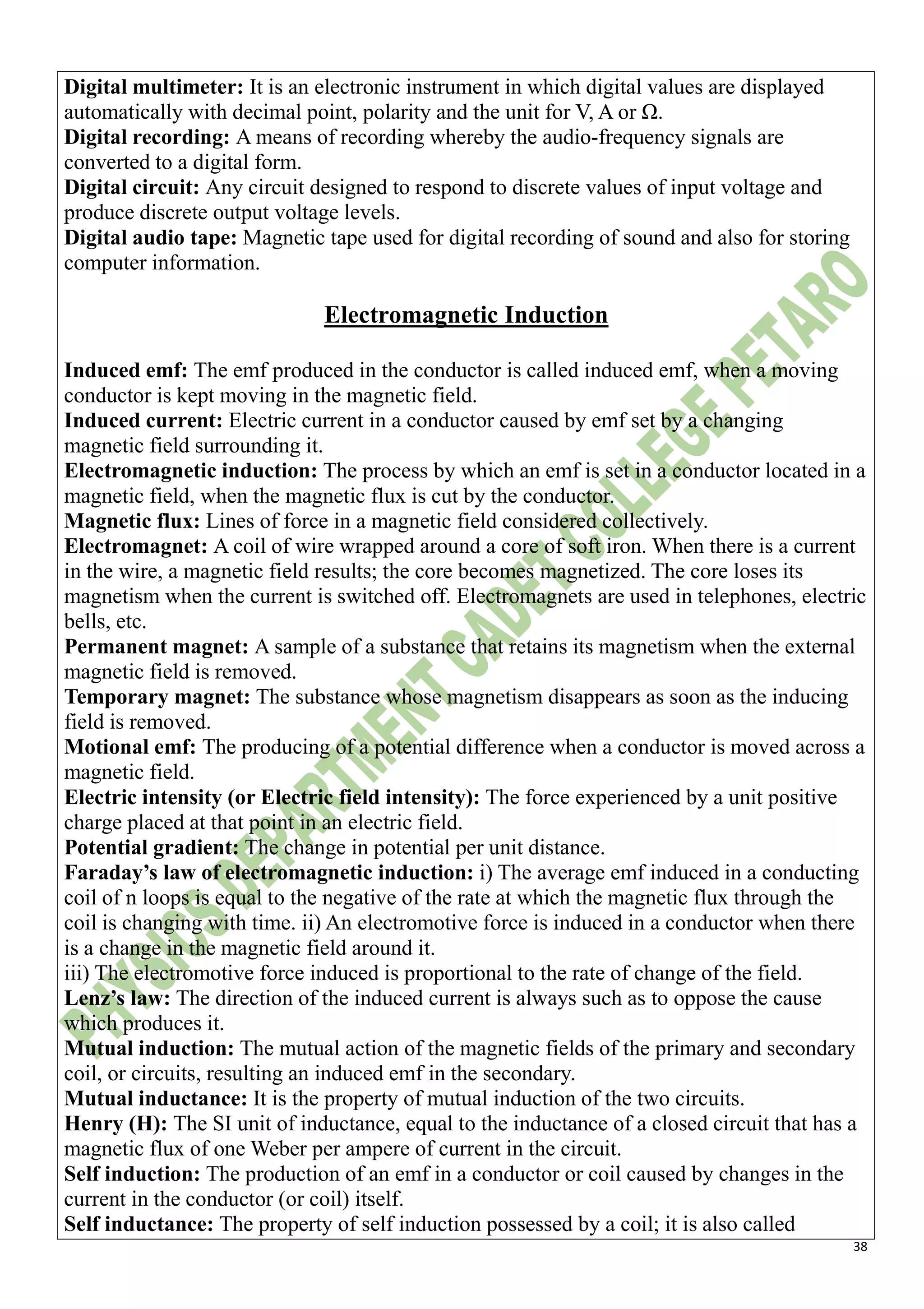
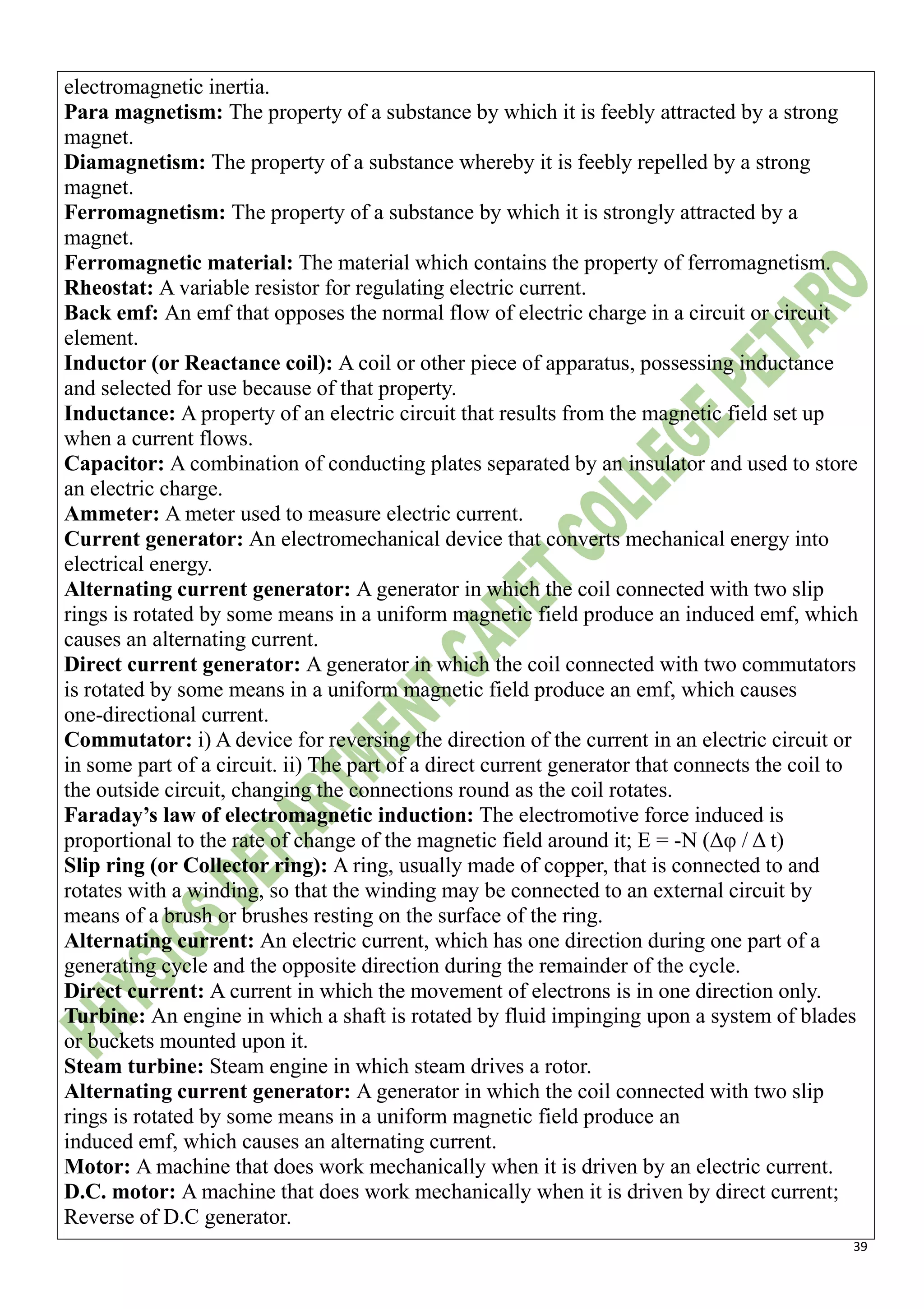

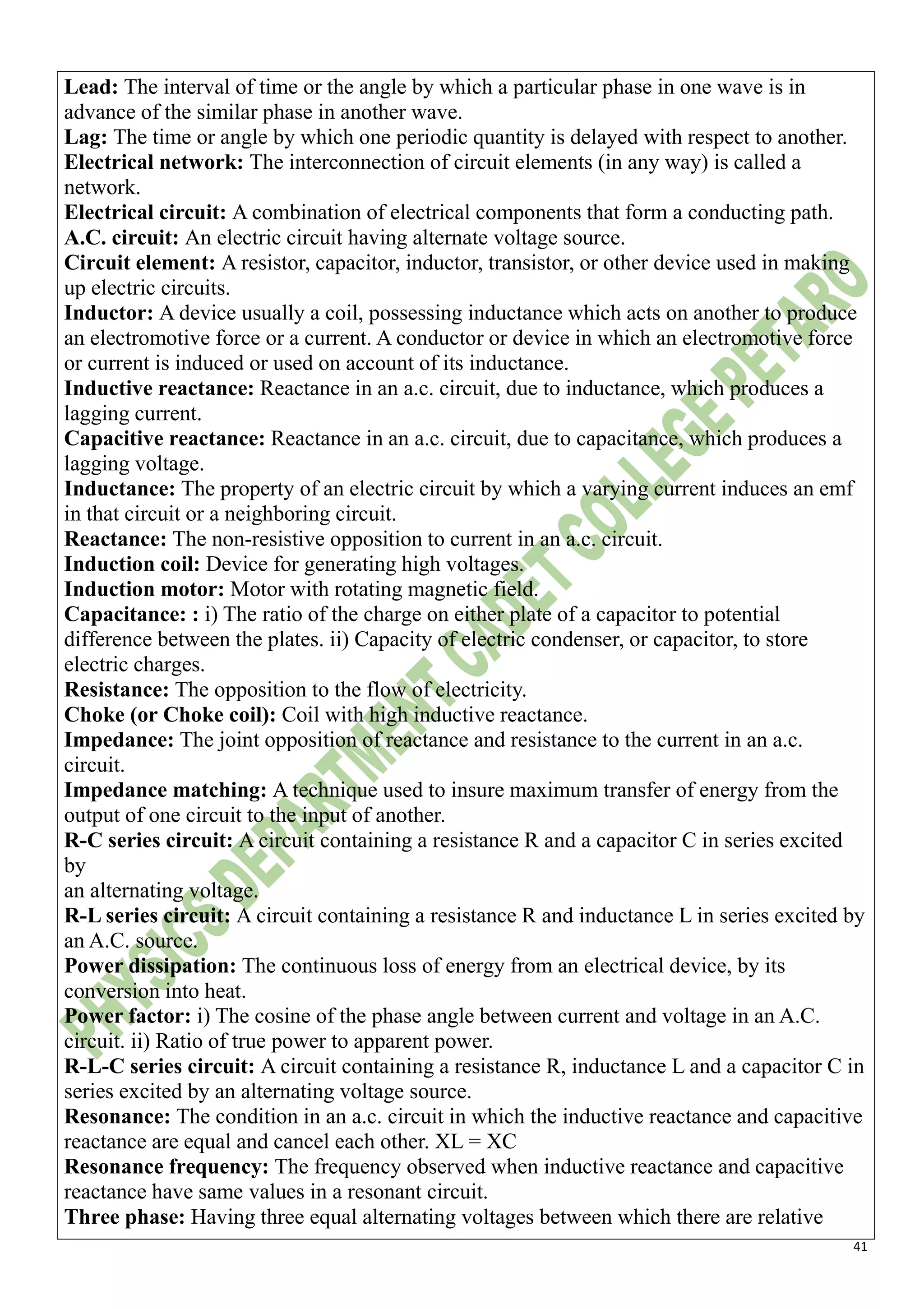
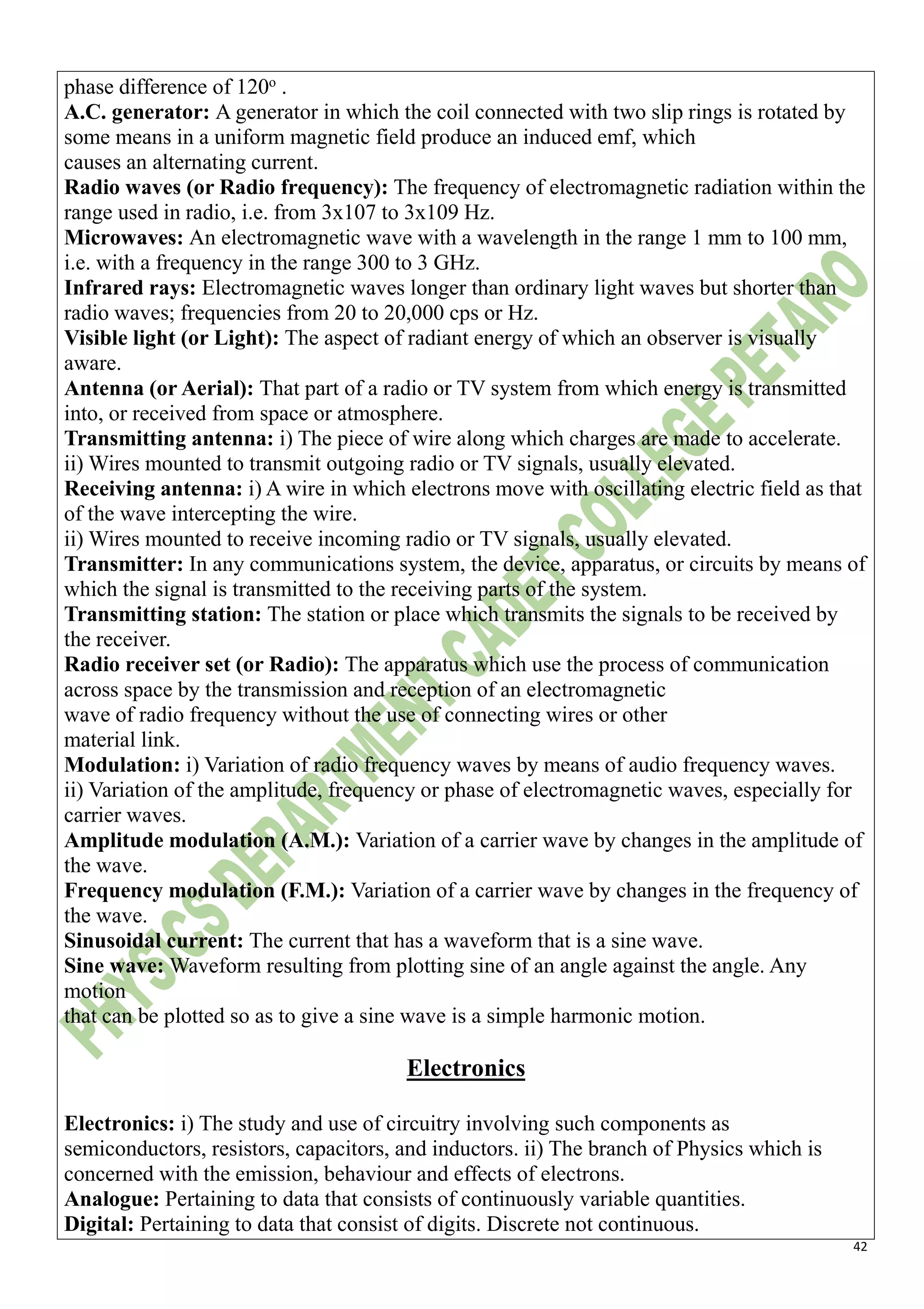


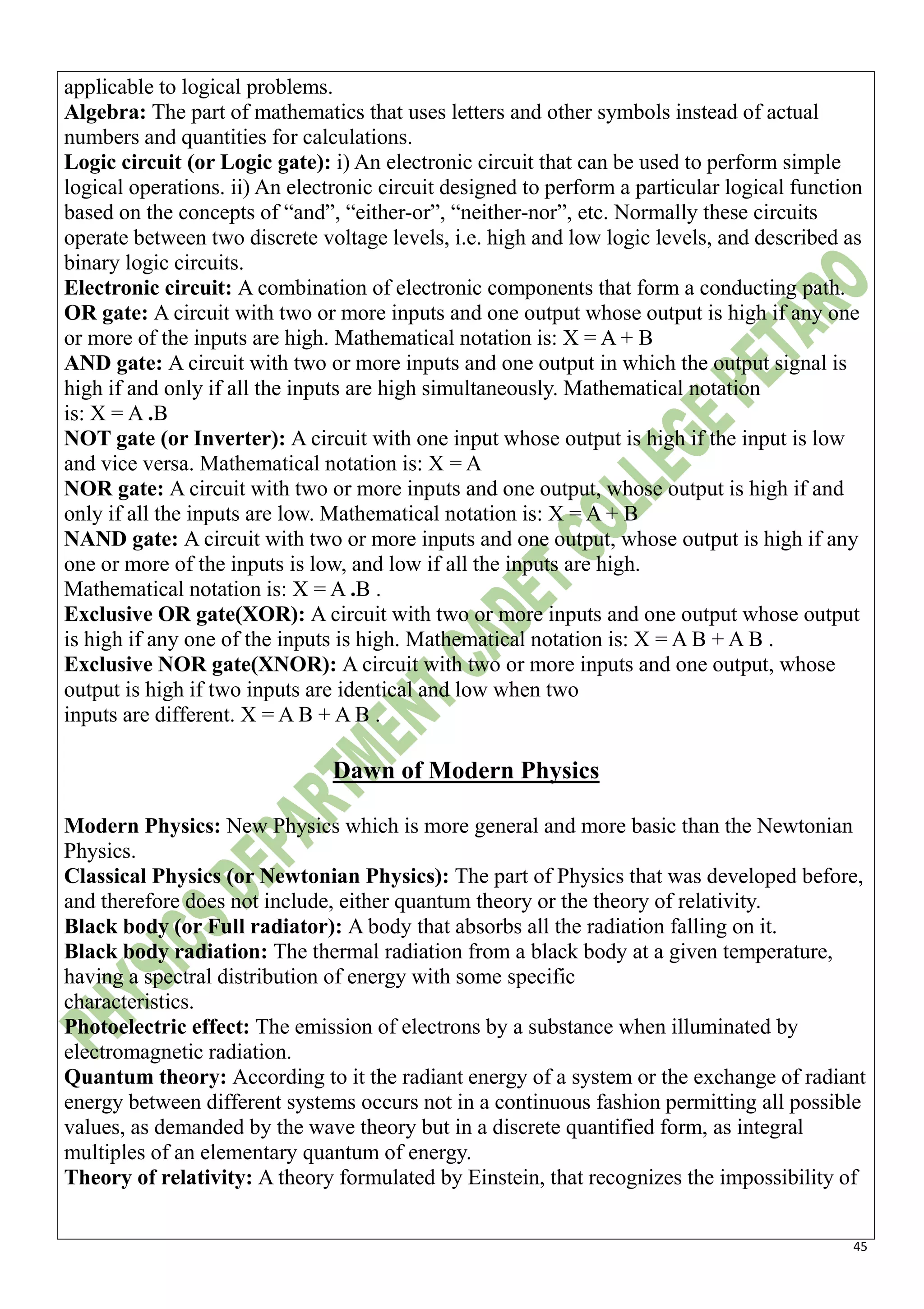
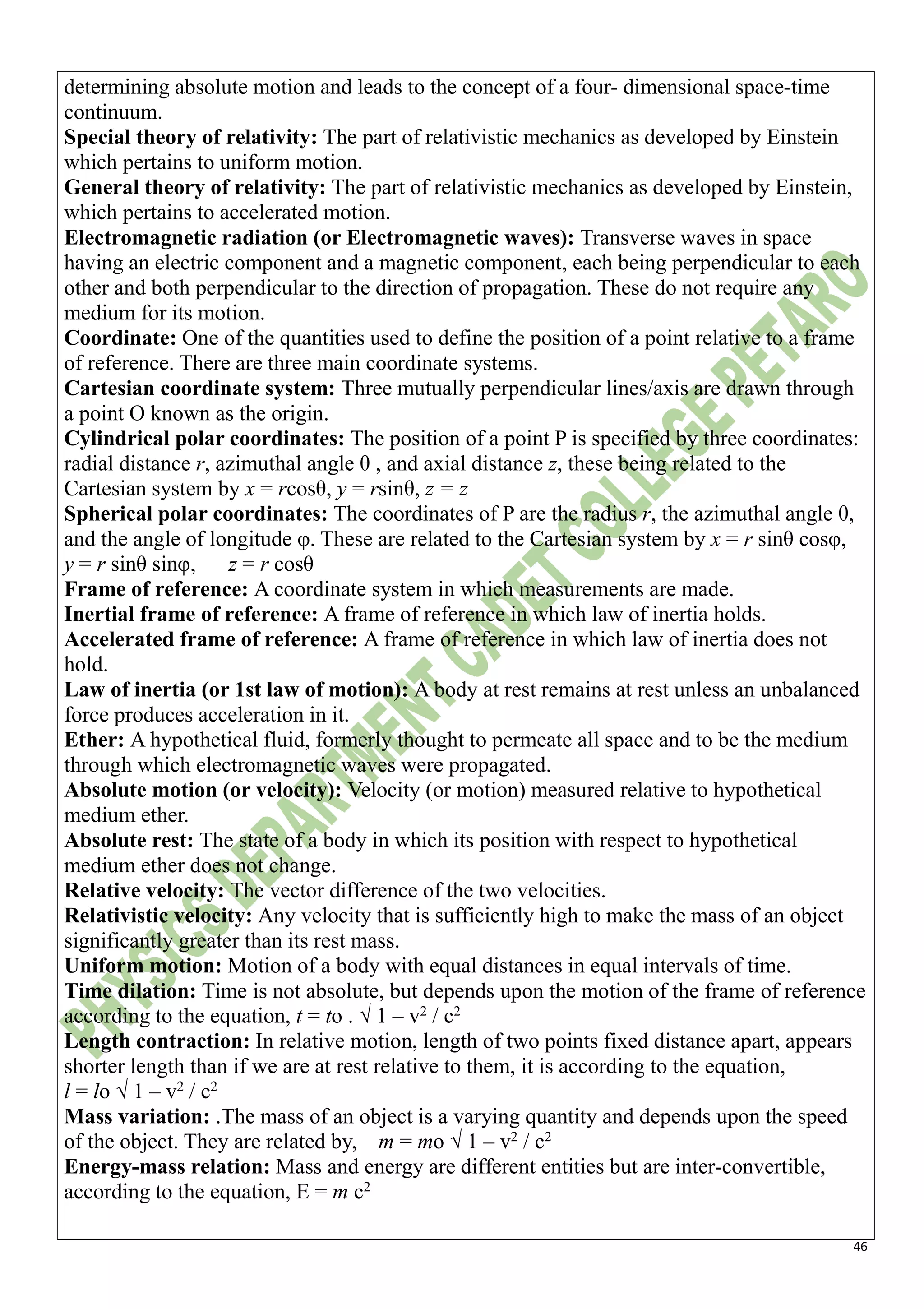
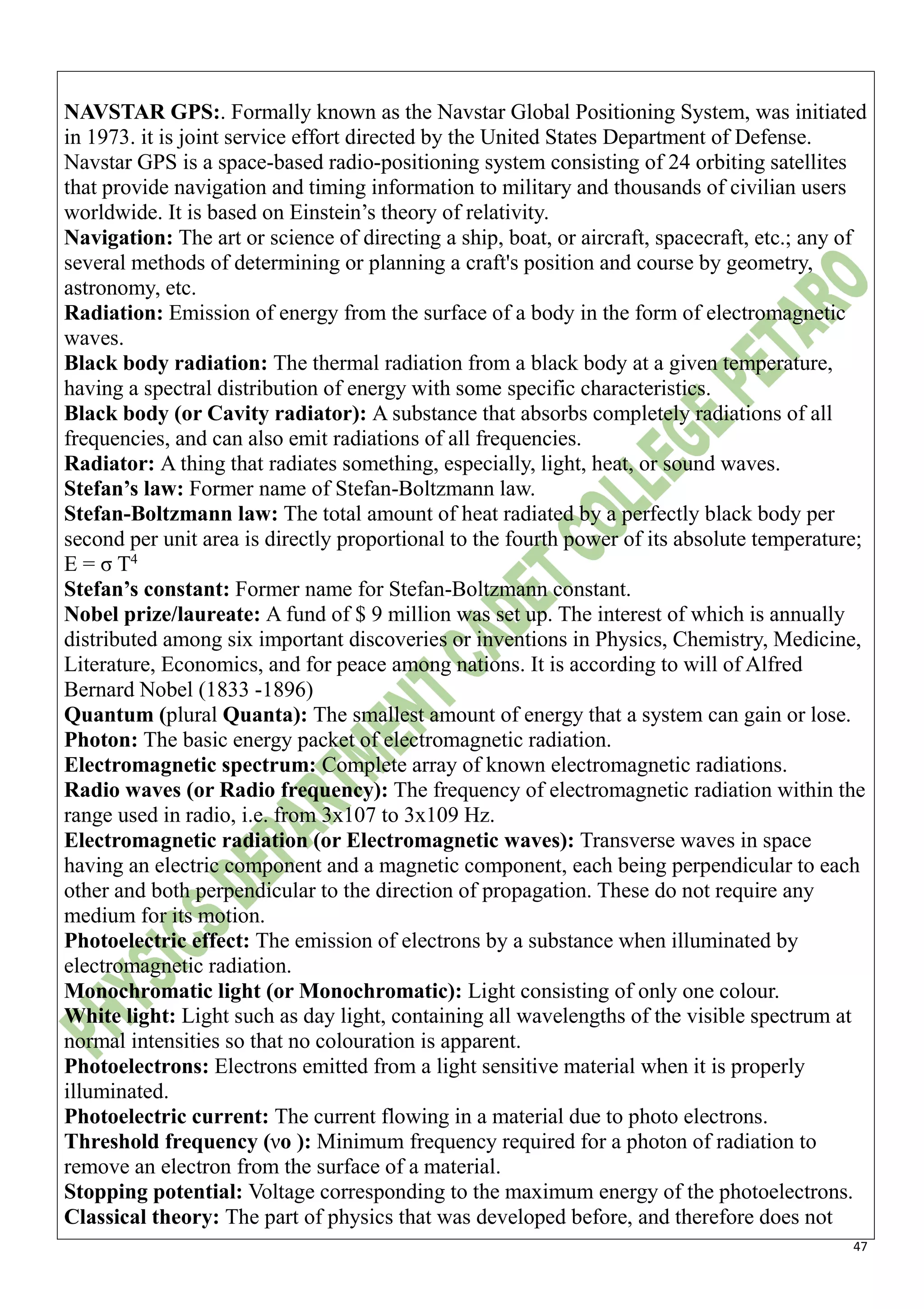
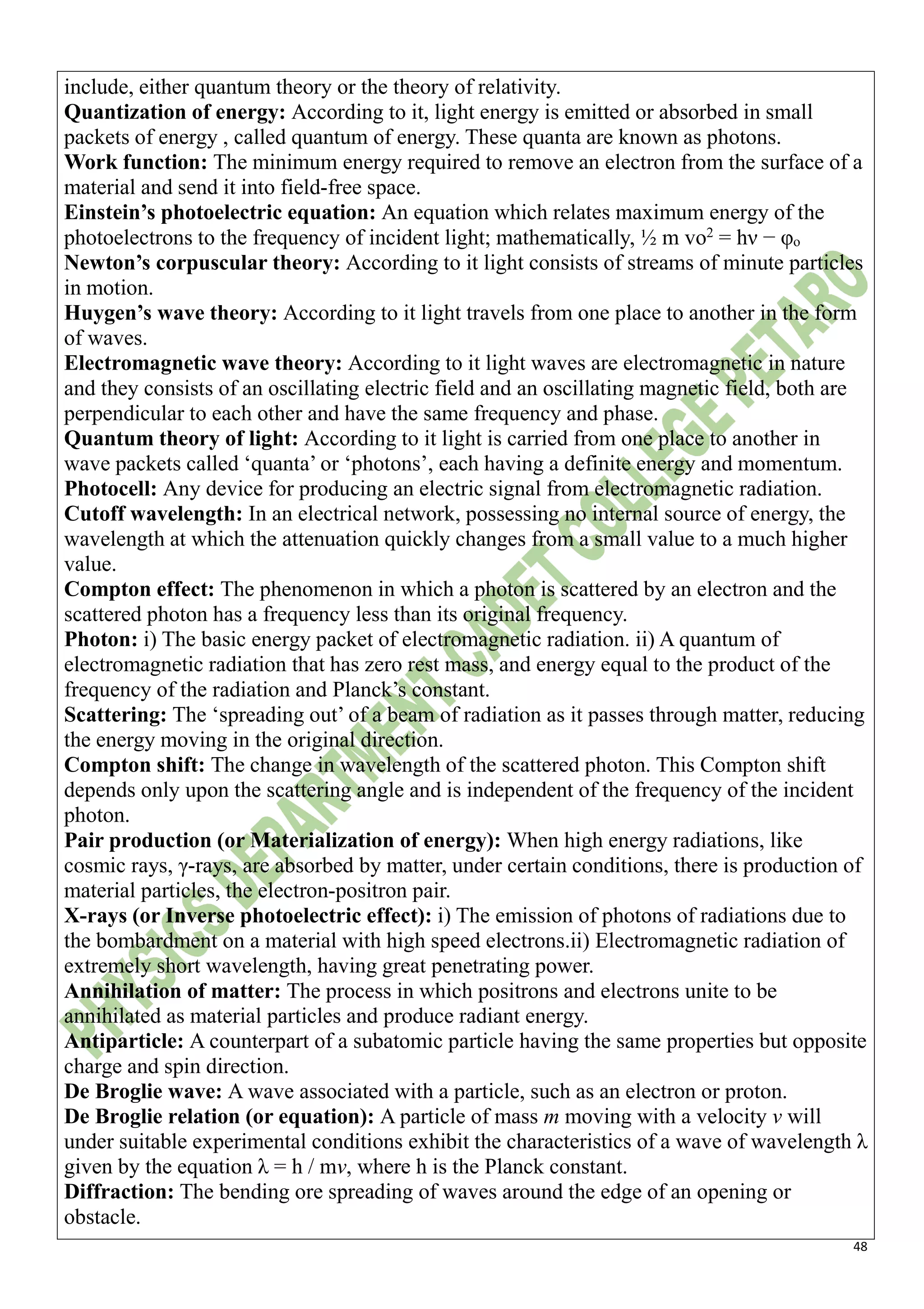
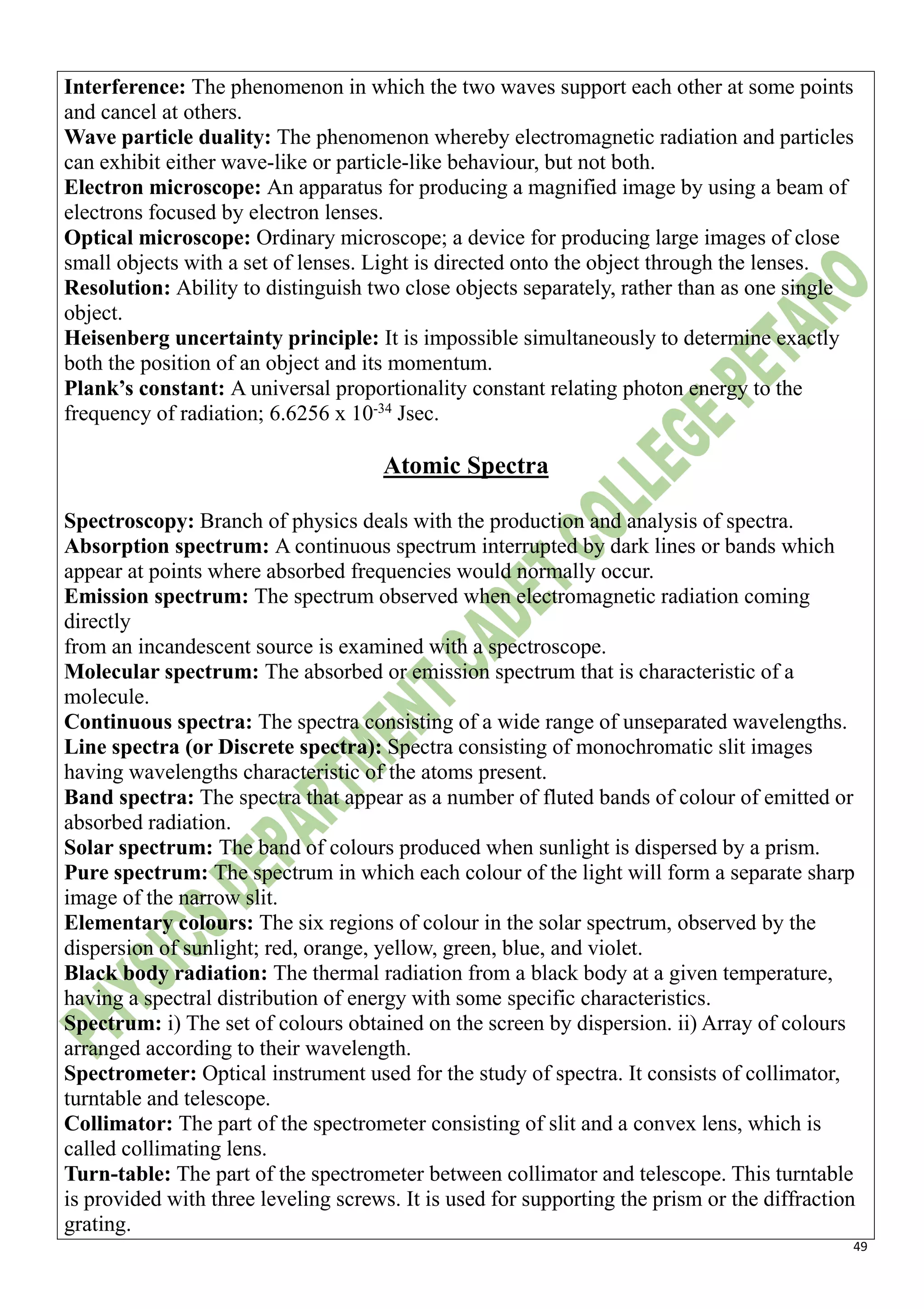
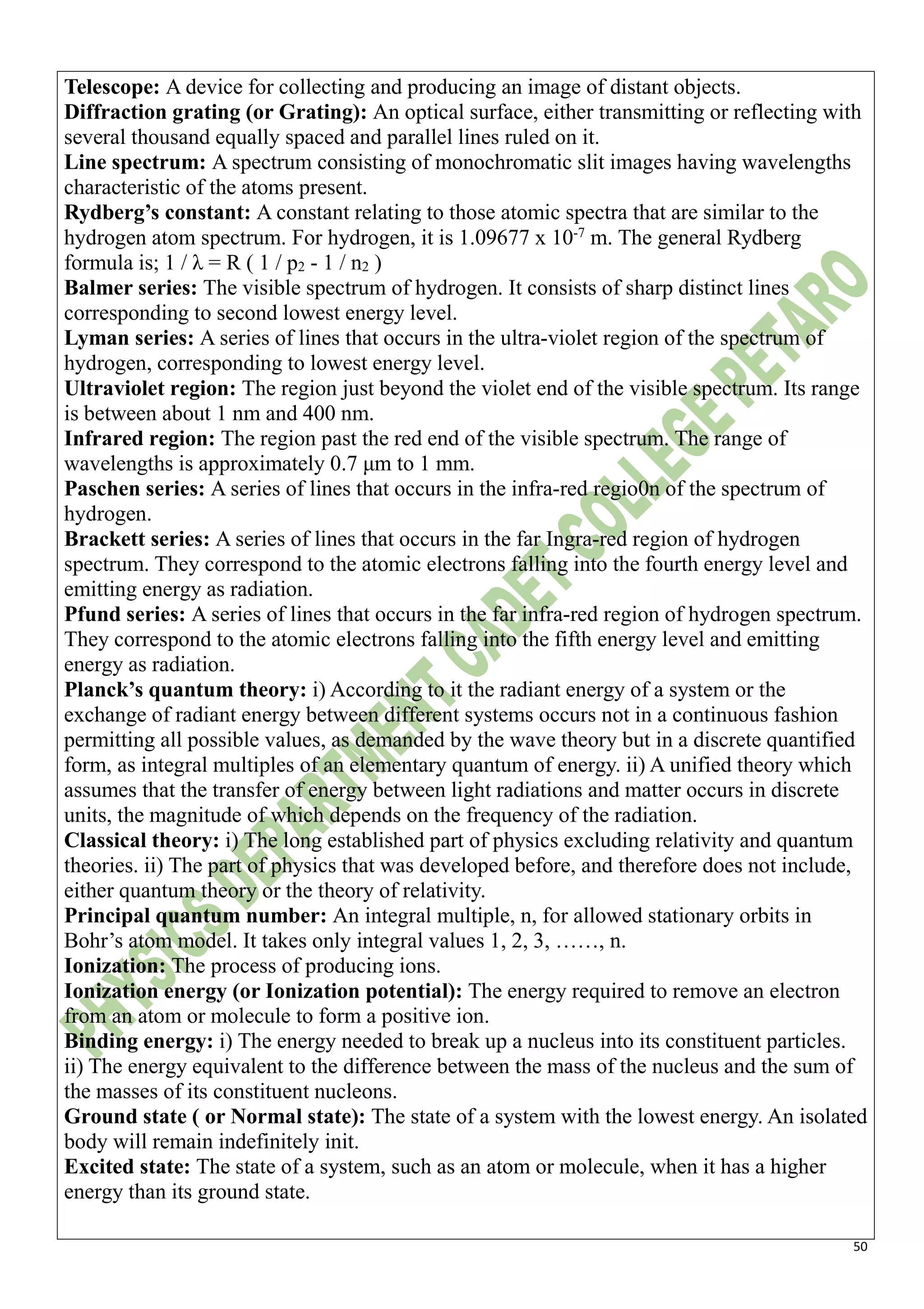
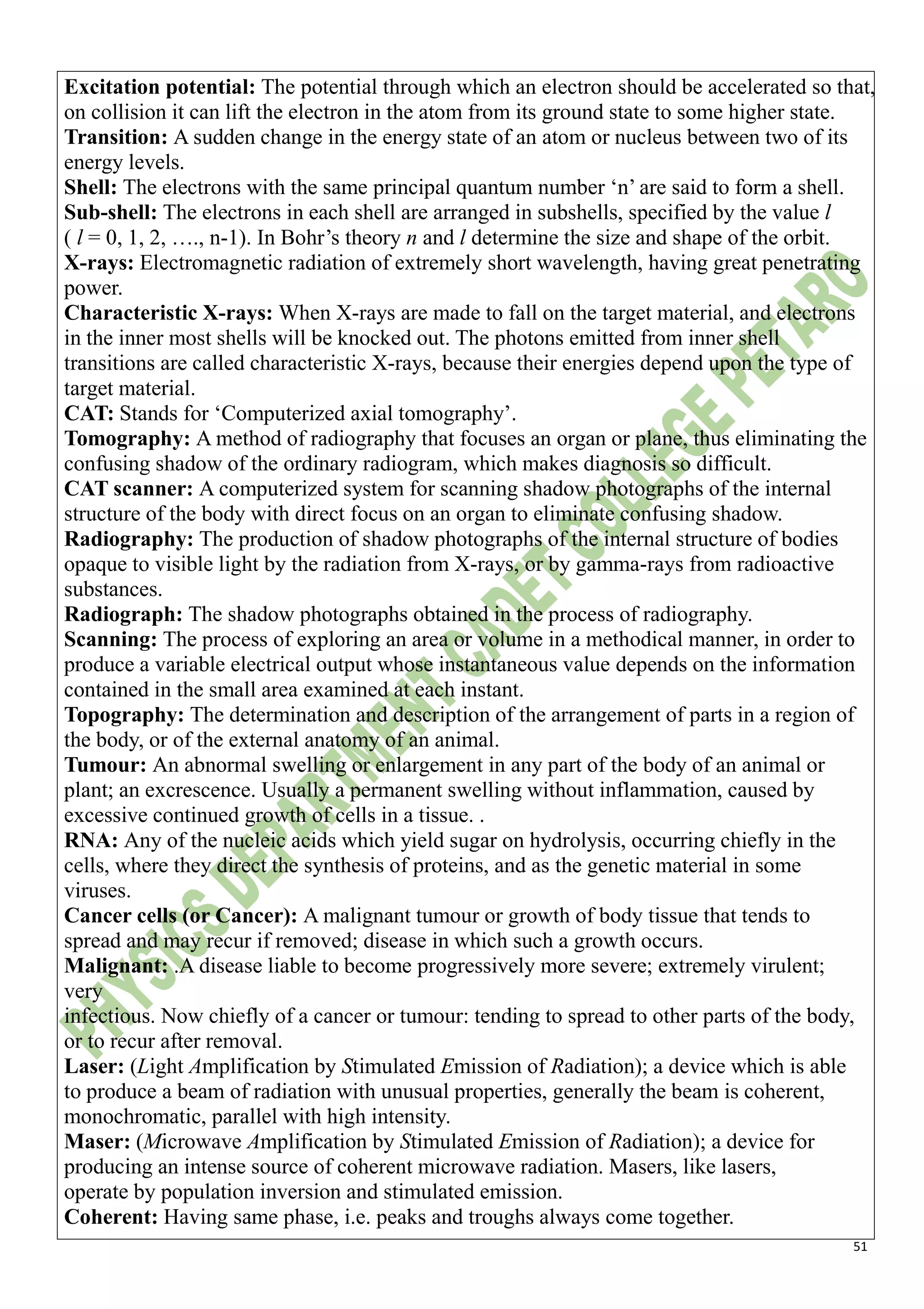
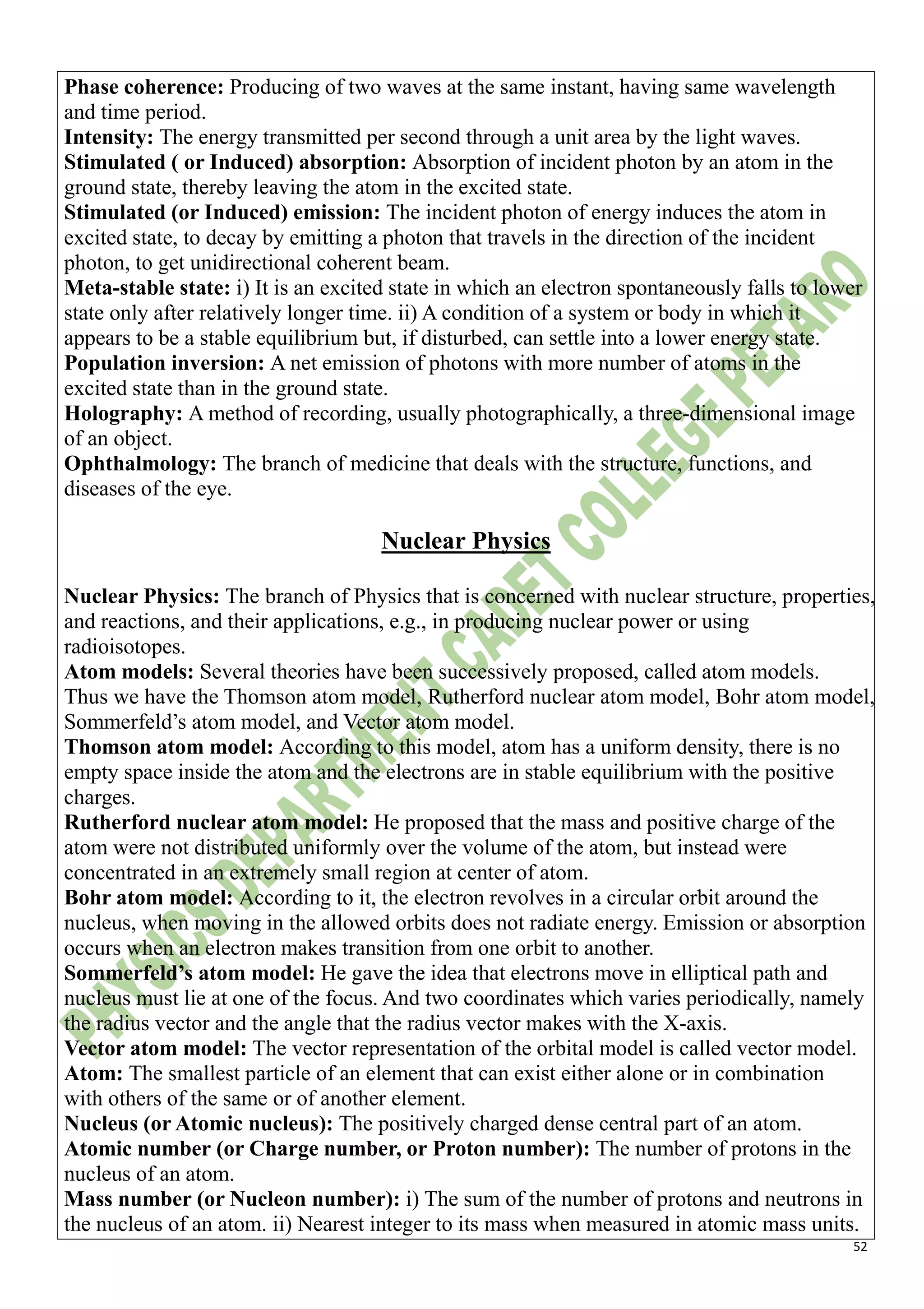
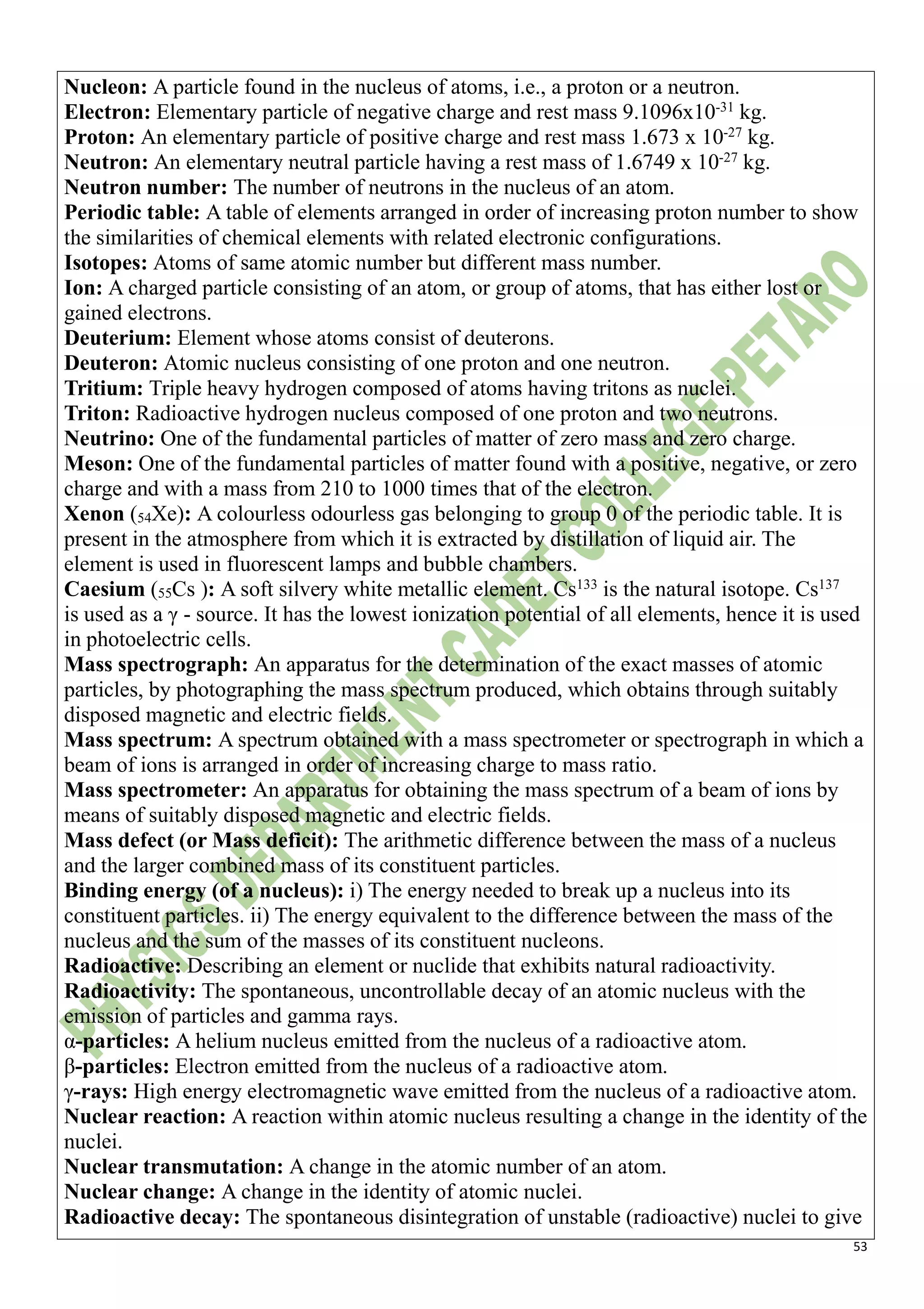
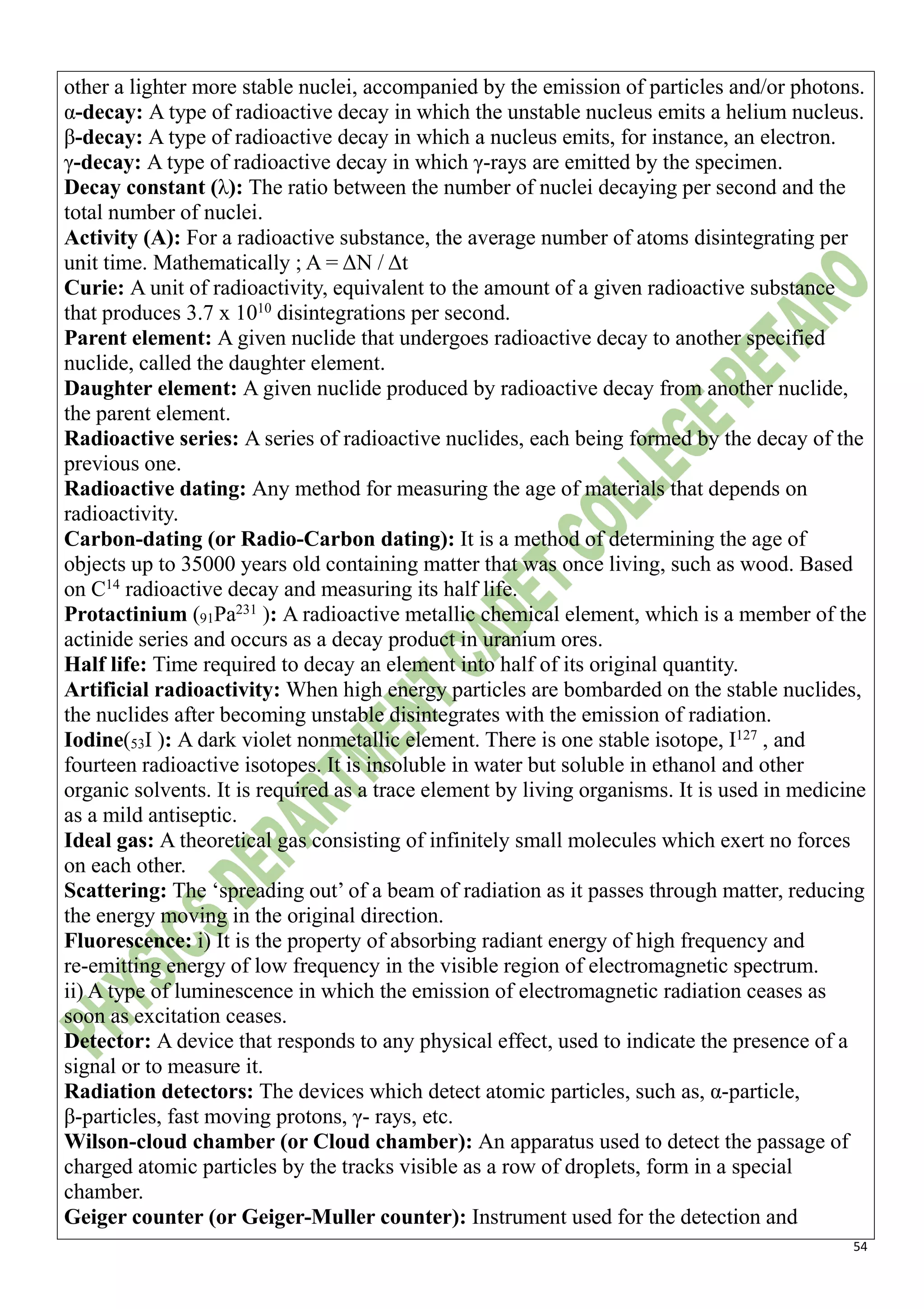

![56
coolant in some types of nuclear reactors.
KANUP (Karachi Nuclear Power Plant): Here heavy water is used as a moderator, and
transportation of heat, from reactor core to heat exchanger, also heavy water is used.
Nuclear waste: Used fuel in a nuclear reactor. Nuclear fuel once used for charging, keep on
operation for few months, then fissile material begins to decrease. Then this used fuel is
removed, which is still radioactive and injurious and harmful to the living things.
Dumping: To throw down nuclear waste in the bottom of old salt places, thousands of
meters below the surface of the Earth.
Thermal reactors: The types of thermal reactors are boiling-water reactor, pressurized-
water reactor, and liquid-metal reactor.
Research reactor: In this reactor uranium rods are placed inside a block of graphite. Fast
moving neutrons are from fission of U235
are slowed down by graphite.
Plutonium reactor: It is used to produce plutonium that can be used in the atomic bomb as
a fissionable material. The reactor contained a critical mass of U238
.
Breeder reactor: It is one in which a fissionable material is produced at a greater rate than
the fuel is consumed.
Power reactor ( or Thermal reactor): A power reactor is a device to make use of the
natural heat developed in a uranium reactor as source of huge power.
Boiling-water reactor: In it a stream of water circulates through the core. The heat turns
the water to steam, which is then used to generate electricity.
Natural uranium: The element uranium naturally occurs in three isotopes which posses
identical chemical properties. Wherever it is extracted it contains the three isotopes with
92U238
at 99.3 %, 92U235
at 0.7 % and 92U234
less than 0.001 %.
Enriched uranium: The uranium with greater percentage of U235
then natural uranium. It is
done with the help of reprocessing plants.
Mass spectrometer: An instrument for producing ions in a gas and analyzing them
according to their charge/mass ratio.
Fusion reaction (or Nuclear fusion): A reaction in which light nuclei combine to form a
nucleus with medium mass, with the release of nuclear energy.
Mass defect (or Mass deficit): The arithmetic difference between the mass of a nucleus
and the larger combined mass of its constituent particles.
Binding energy (of a nucleus): i) The energy needed to break up a nucleus into its
constituent particles. ii) The energy equivalent to the difference between the mass of the
nucleus and the sum of the masses of its constituent nucleons.
Hydrogen bomb: It consists of a fission bomb surrounded by a layer of hydrogenous
material, such as lithium deuteride.
Neutron bomb (or Cobalt bomb): It is made by covering hydrogen bomb with metallic
cobalt. When it is exploded, neutrons emitted react with cobalt cover and form Co60 which
three hundred times powerful than radium.
Ozone (or Trioxygen) [O3 ]: A colourless gas, soluble in cold water and in alkalis. Liquid
ozone is dark blue in colour and is diamagnetic (O2 is paramagnetic). It is produced in the
stratosphere by the action of high-energy ultraviolet radiation on oxygen and its presence
acts as a screen for ultraviolet radiation.
Ozone layer: The region of the upper atmosphere, at an altitude of 10 to 50 km (6 to 30
miles), containing significant amounts of ozone, which absorbs short ultraviolet light; esp.
the region of maximum ozone concentration between 20 and 25 km (12 and 15 miles).](https://image.slidesharecdn.com/physicsdefinitions-210203103731/75/Physics-definitions-56-2048.jpg)
